- A big step up in almost every area on previous Triton
- Refined and mature driving experience
- Improved 3,500kg braked towing capacity matches class leaders
- New engine an improvement but could still be more powerful
- No hybrid or plug-in hybrid option yet
- Overactive driver monitoring system
Launched back in 1978 and with 5.6 million sales now under its belt, the Mitsubishi Triton has morphed into Mitsubishi’s most important product globally. Sold on almost every continent, the Triton has an important role in the brand’s lineup as the workhorse. While it’s not as glamorous the Outlander, for example, it sells even better globally and has built up a reputation as a value-packed workhorse for the world’s tradies and their families. Enter the new 2024 Mitsubishi Triton, which is larger, more mature and better equipped than before – but, also, more expensive too. Is it the ute to buy? Let’s find out.
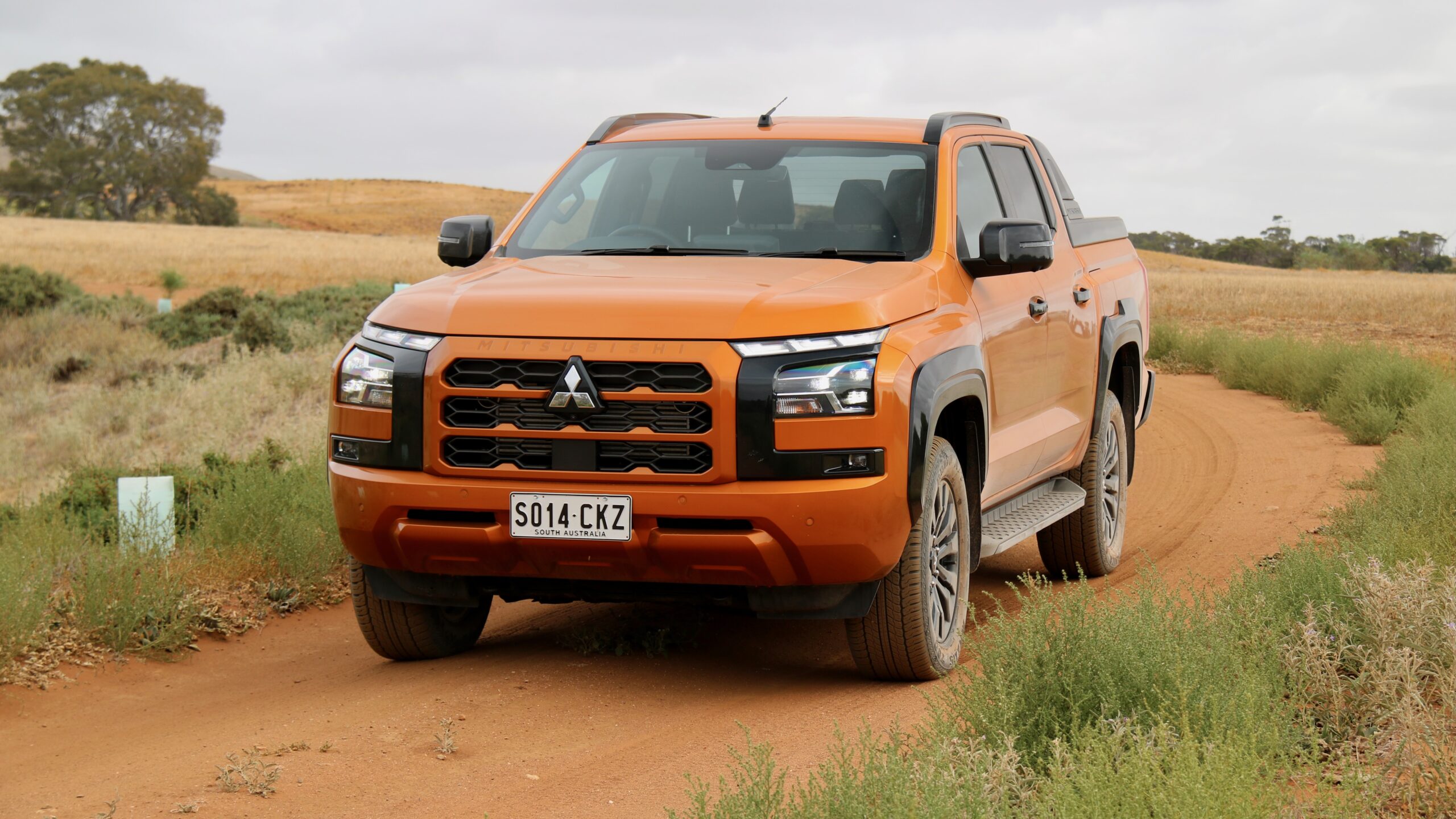
It’s no secret that utes are massively popular in Australia, making up almost 20 per cent of our total new vehicle sales. Because of that, Mitsubishi Motors Australia was a big part of the new Triton’s development, which actually began way back in 2017 and was paused multiple times thanks to the pandemic. The new Triton was tested extensively against class leaders in Australia, and we (plus New Zealand too) even get a unique suspension tune to cope with our roads. With seven years of development under its belt, is the new Triton a challenger to the class leaders?
How much does the 2024 Mitsubishi Triton cost to buy?
At launch, there are five variants of the 2024 Mitsubishi Triton available in Australia. All variants are dual cab, use a twin-turbo diesel engine and a six-speed automatic transmission, though other cab styles and a manual transmission option are due later in 2024. Pricing starts at $43,690 plus on-road costs for the entry-level GLX 4×2 and rise to $63,790 +ORC for the top-spec GSR that we mostly drove on the launch.
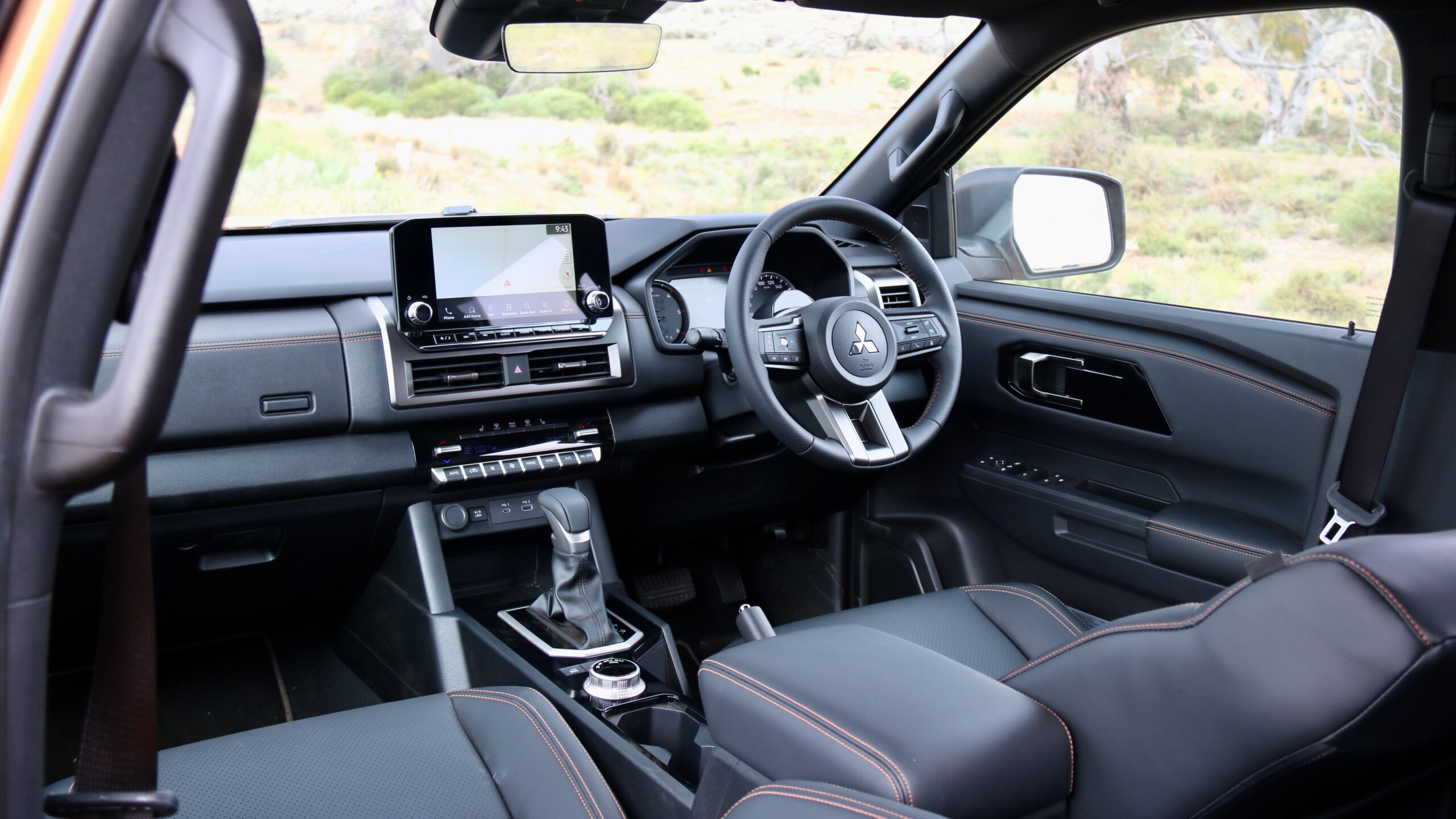
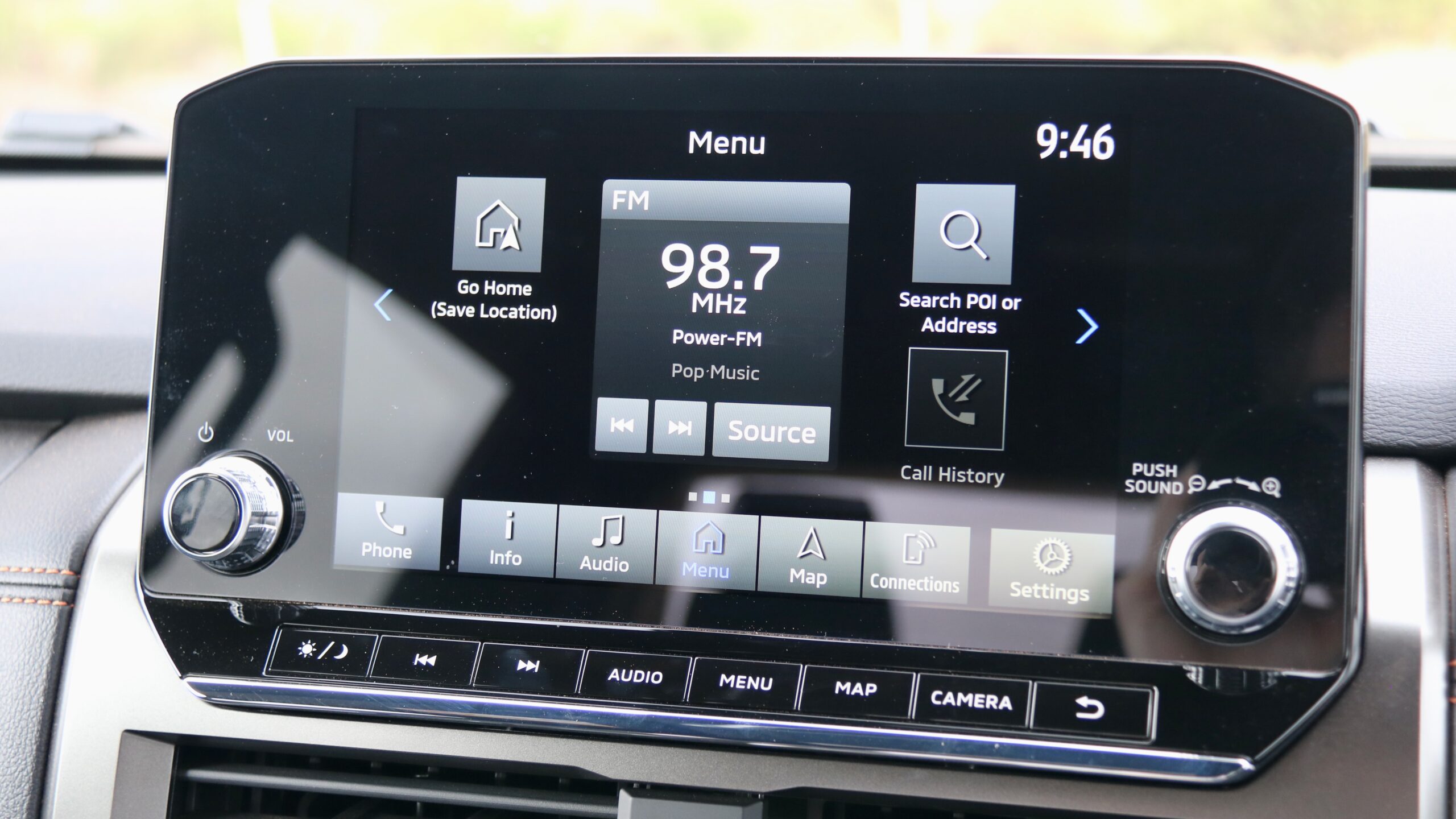
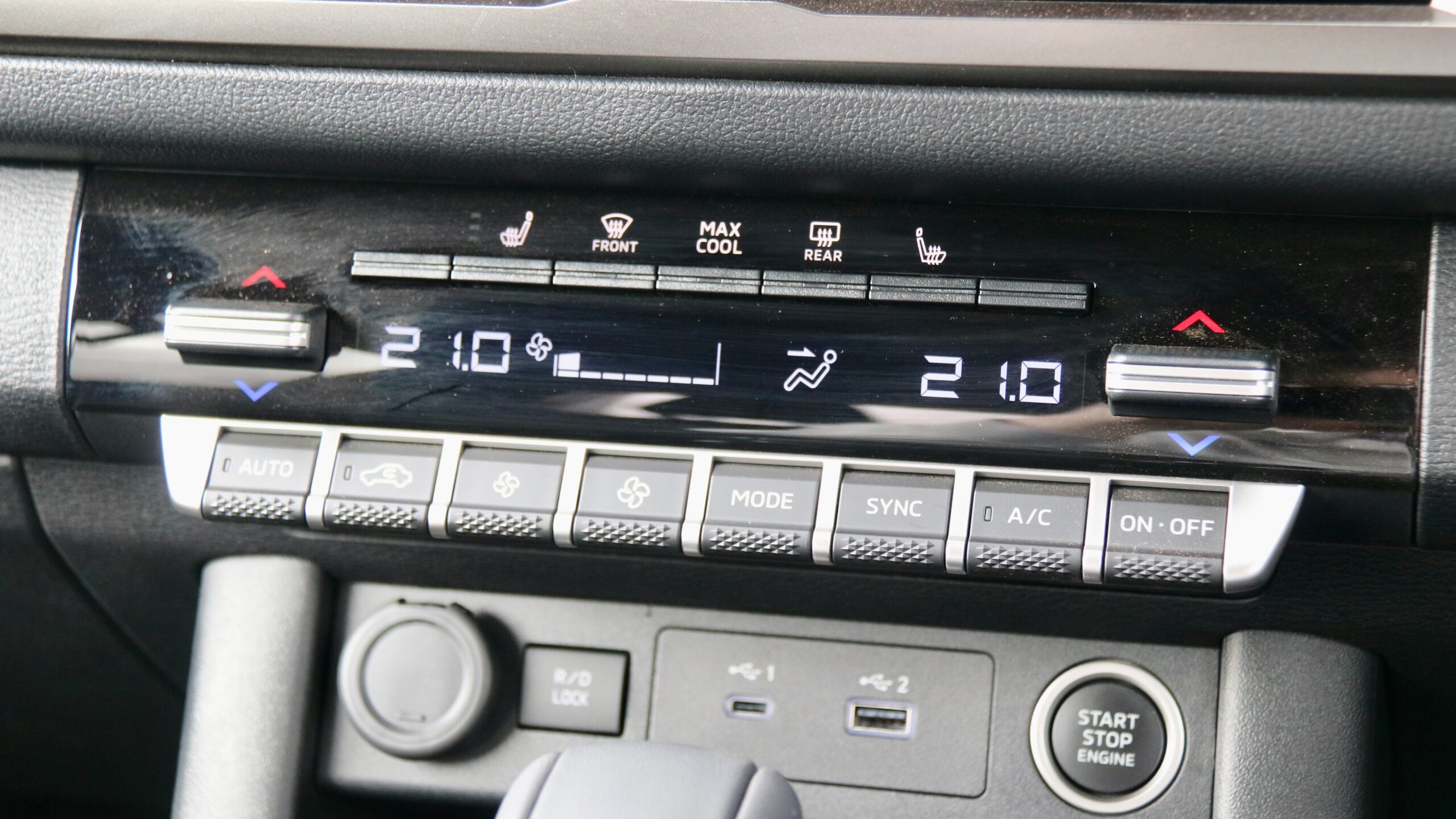
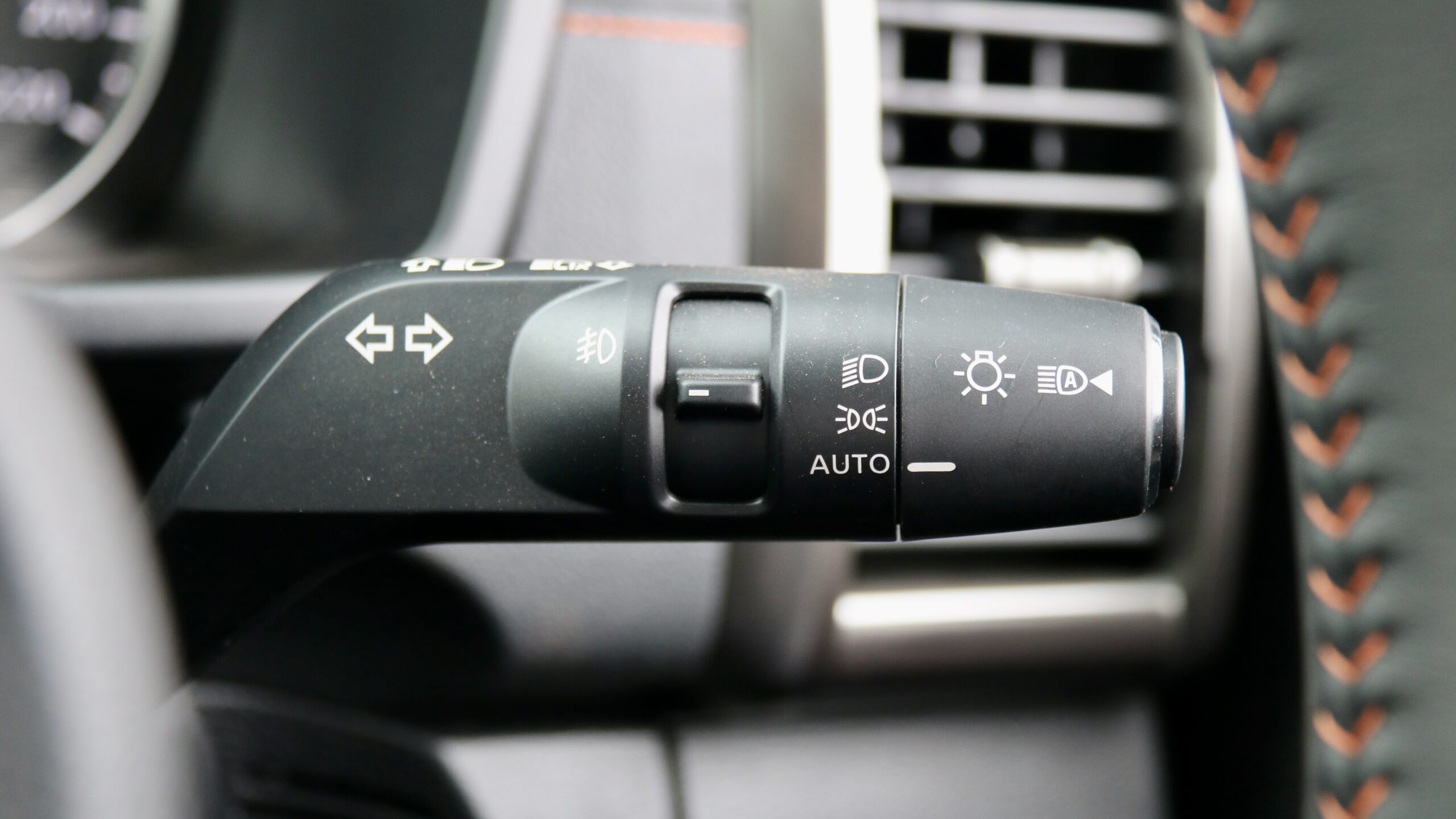
Standard equipment on the Triton GLX includes:
- Automatic dusk-sensing halogen headlights (without an ‘off’ position)
- Automatic rain-sensing wipers
- 17-inch steel wheels
- Heavy-duty rear suspension
- Electric windows and mirrors
- Cloth seat trim
- Electric lumbar adjustment for the driver’s seat
- Single-zone automatic climate control
- Roof-mounted air circulator for rear passengers with fan speed control
- 9.0-inch touchscreen
- Wireless Apple CarPlay
- Wired Android Auto
- Satellite navigation
- AM/FM radio
- 7.0-inch digital driver’s display
- Four-speaker sound system
- 2x front USB ports (1x USB-A, 1x USB-C)
- Vinyl flooring
Safety equipment:
- Eight airbags (including a front centre unit)
- Auto emergency braking (AEB) with pedestrian, cyclist and intersection assist
- Adaptive cruise control (which can be switched to non-adaptive)
- Auto high beam
- Automatic post-collision braking
- Blind-spot monitoring
- Rear cross-traffic alert (front cross-traffic alert is a no-cost dealer-fit option)
- Lane departure warning
- Traffic sign recognition
- Driver attention monitoring
- Intelligent speed limiter
- Tyre pressure monitoring
- Front and rear parking sensors
- 360-degree camera
The 2024 Mitsubishi Triton is yet to be tested by any safety agency globally, but will likely be tested by ANCAP in the coming months. We will update this article when a rating is announced.
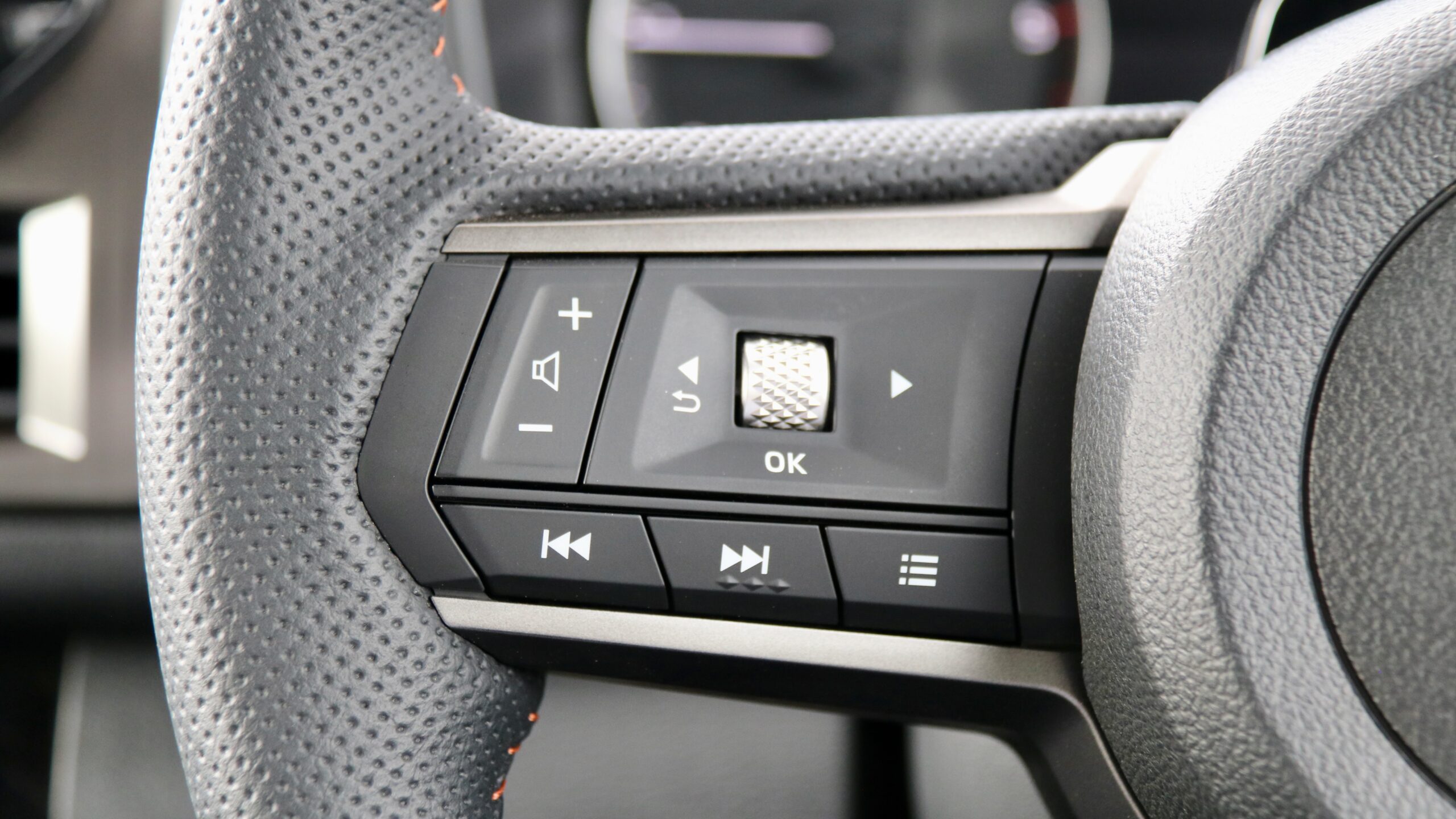
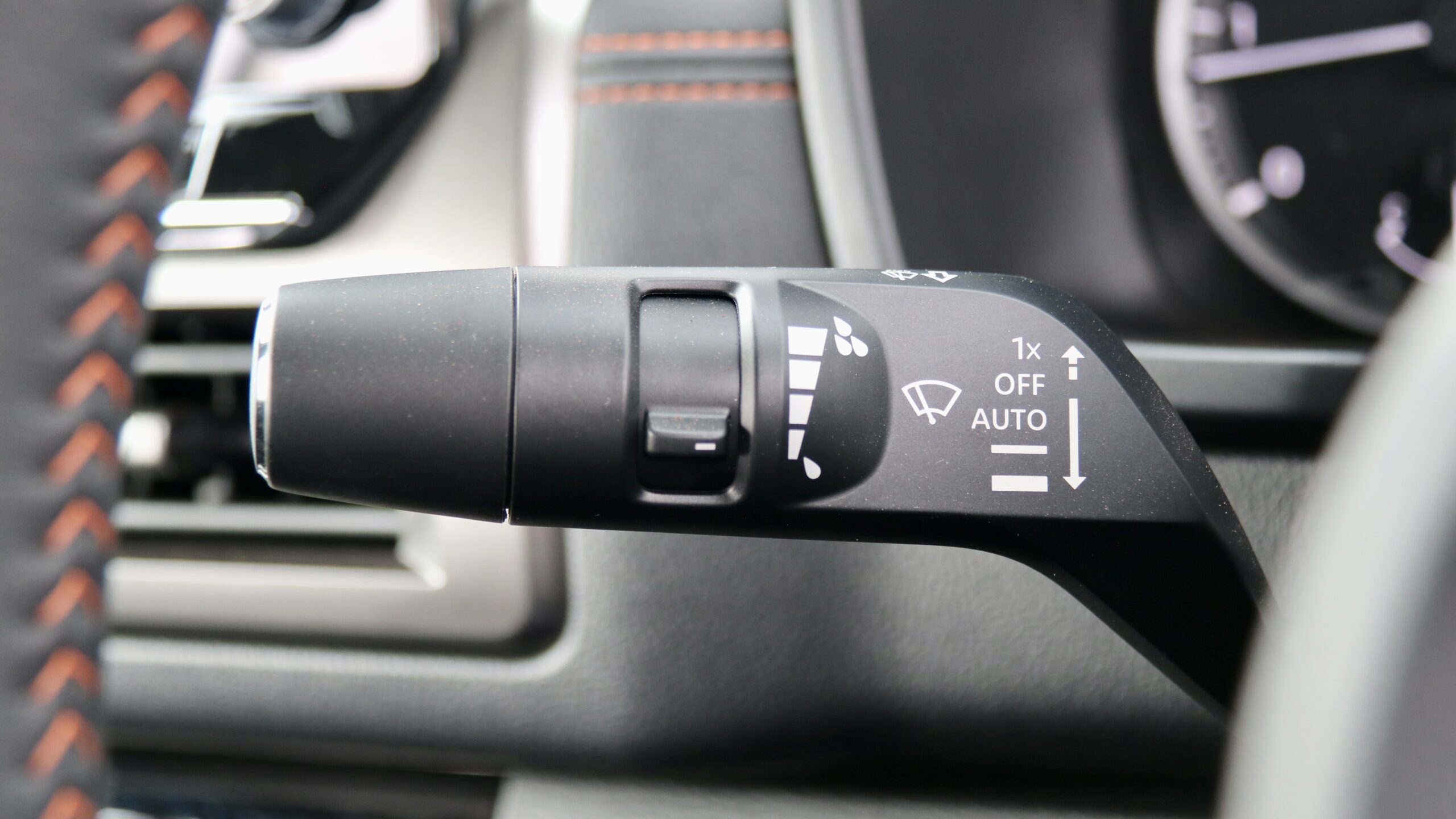
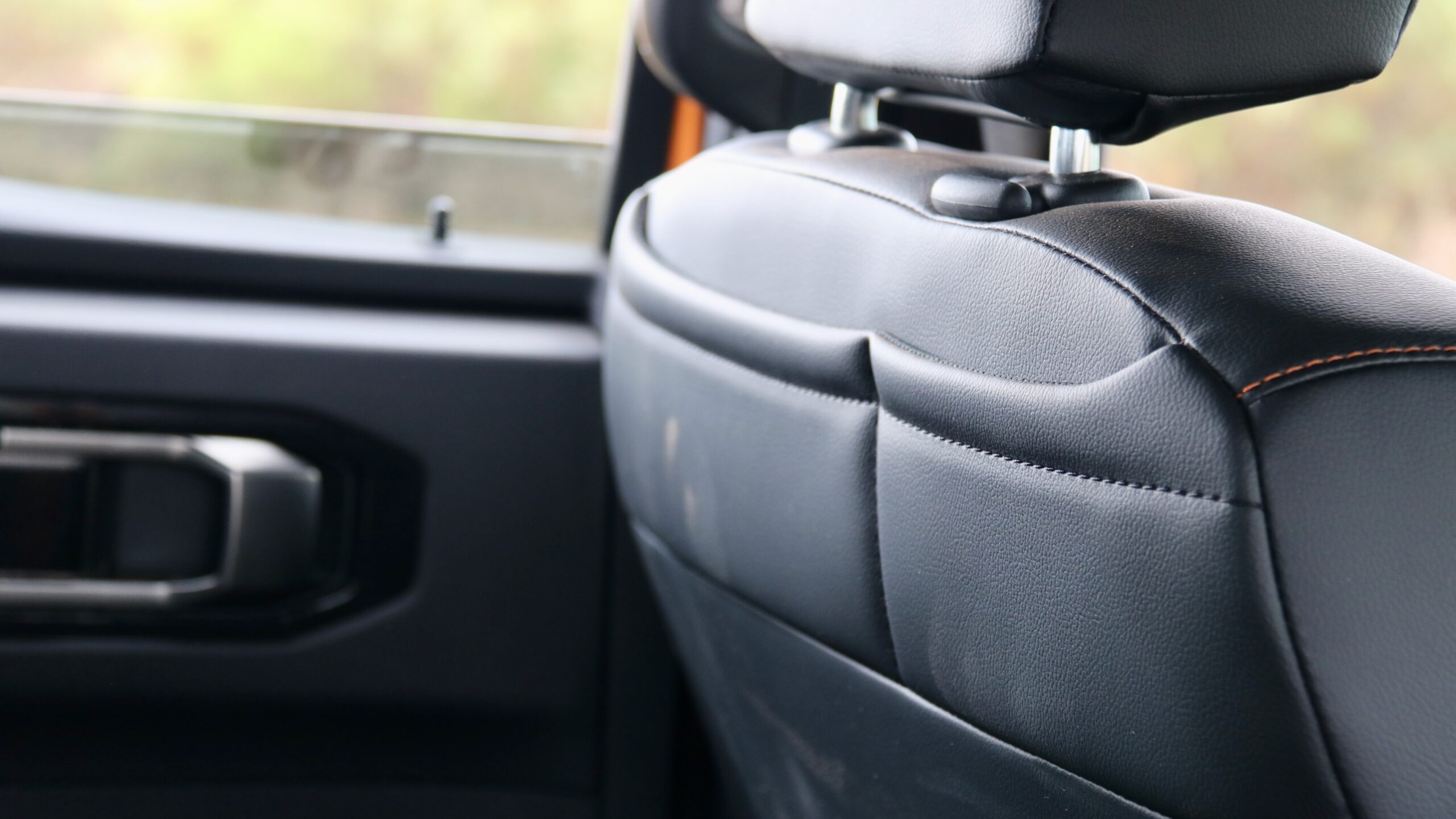
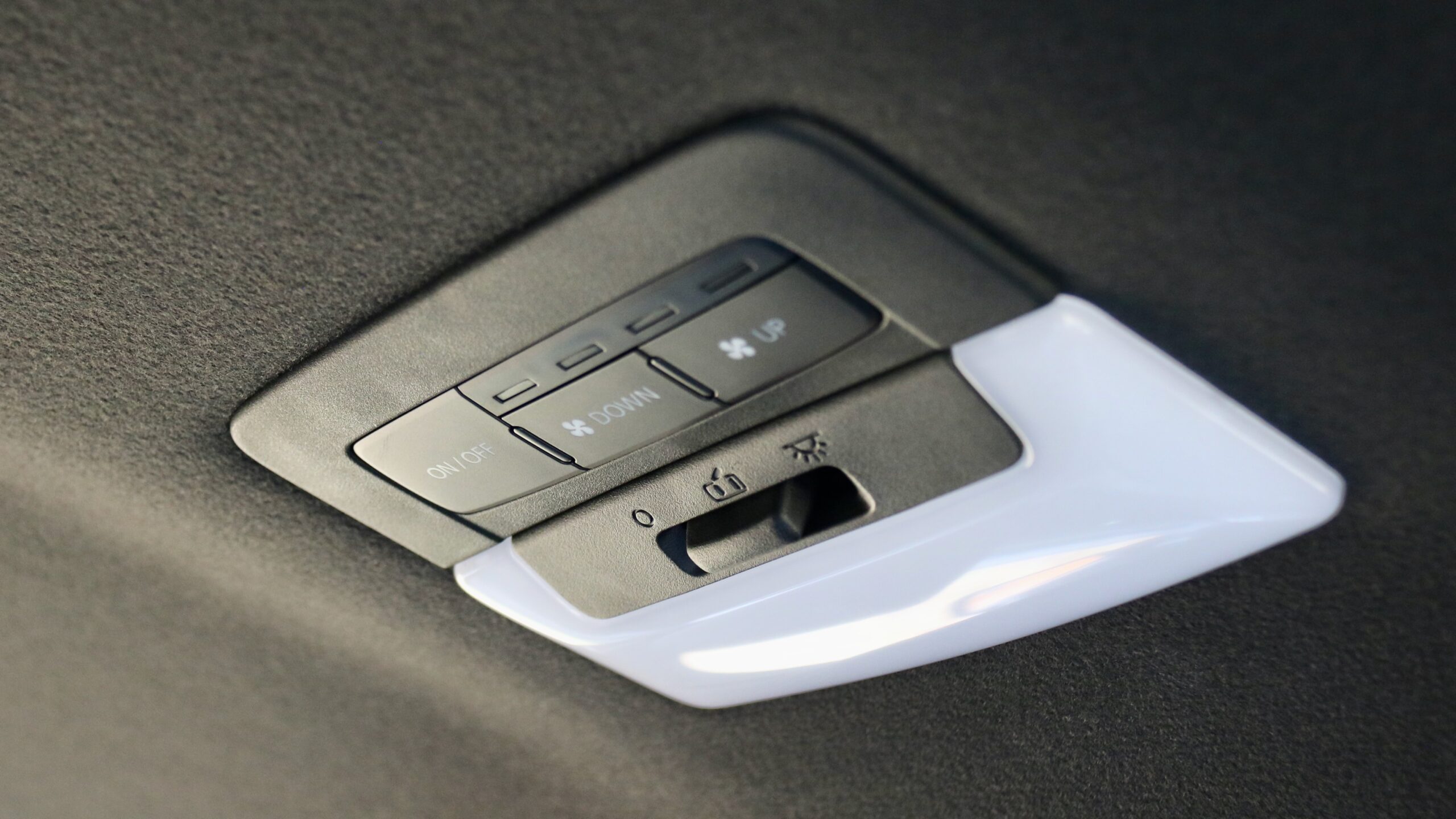
Triton GLX+ ($53,290 +ORC) adds:
- 17-inch alloy wheels
- Reverse auto emergency braking (AEB)
- Side steps
- Rear differential lock
- Halogen front fog lights
- Rear privacy glass
- DAB+ digital radio
- Second row USB ports (1x USB-C, 1x USB-A)
Triton GLS ($59,060 +ORC) adds:
- ‘Super Select II’ four-wheel drive system with terrain control driving modes
- Hill descent control
- Standard-duty rear suspension
- 18-inch alloy wheels
- Leather steering wheel and gearknob
- Tub liner
- LED headlights, front fog lights, daytime running lights and tailights
- Heated and auto-folding mirrors
- Six-speaker sound system
- Gloss black front grille trim
- Soft touch dashboard trimming
- Dual-zone automatic climate control
- Keyless entry with push button start
- Wireless phone charger
- Auto-dimming rear mirror
- Carpet floor trim
- Silver interior trim highlights
The GLS can be optioned with the $1,500 GLS Leather Option Package, which adds black leather upholstery with silver stitching, a 10-way electric driver’s seat and heated front seats.
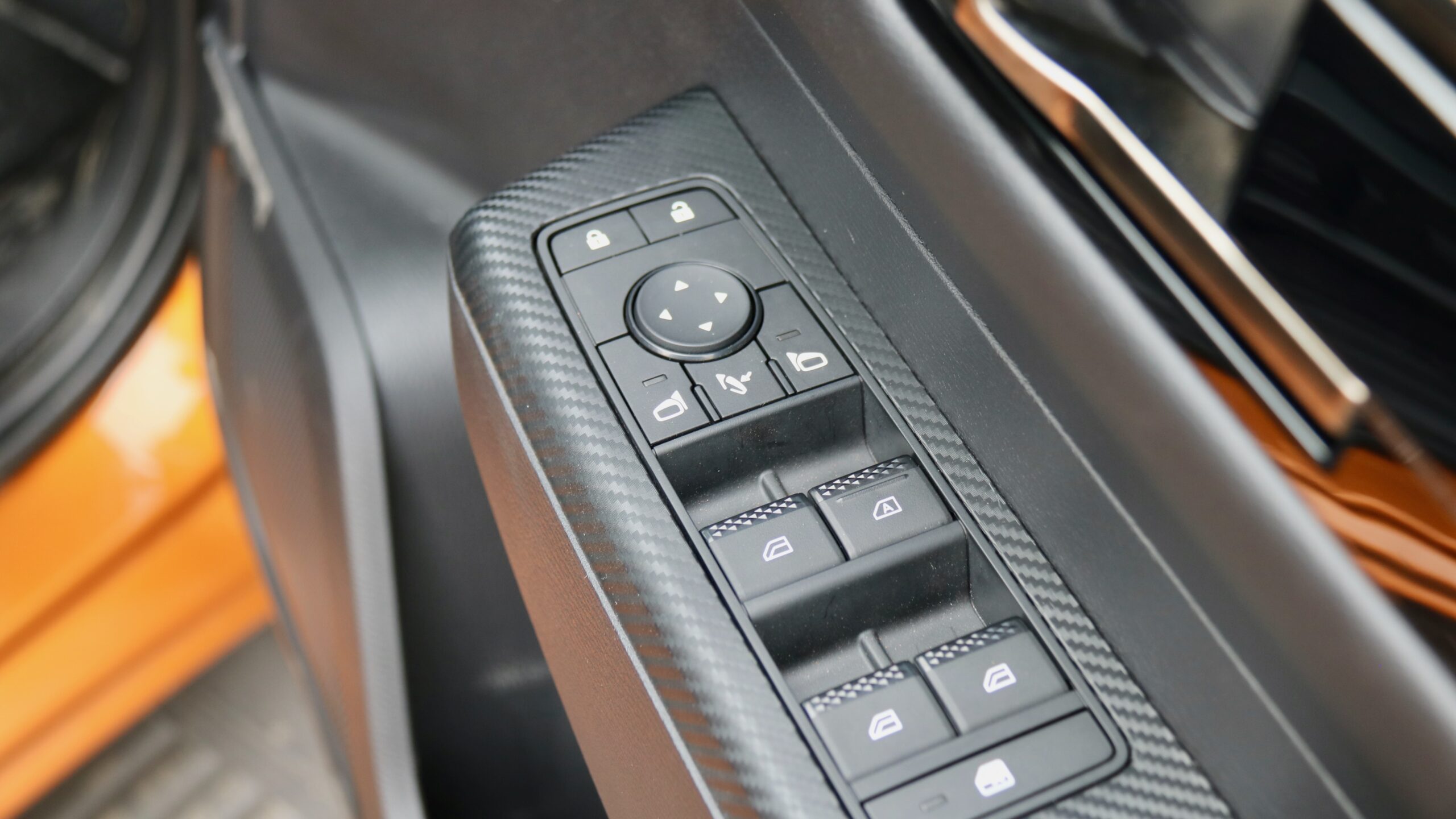
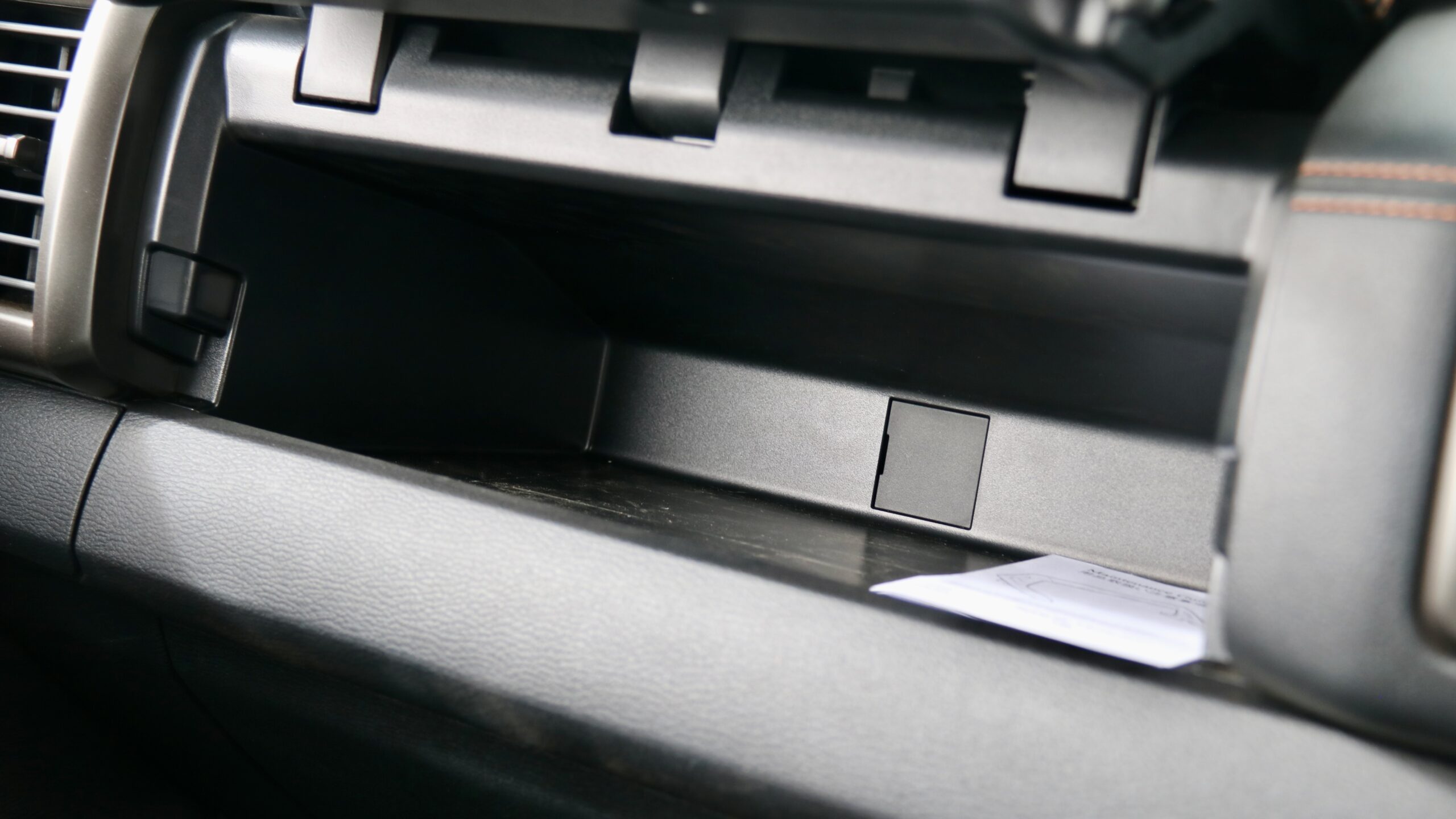
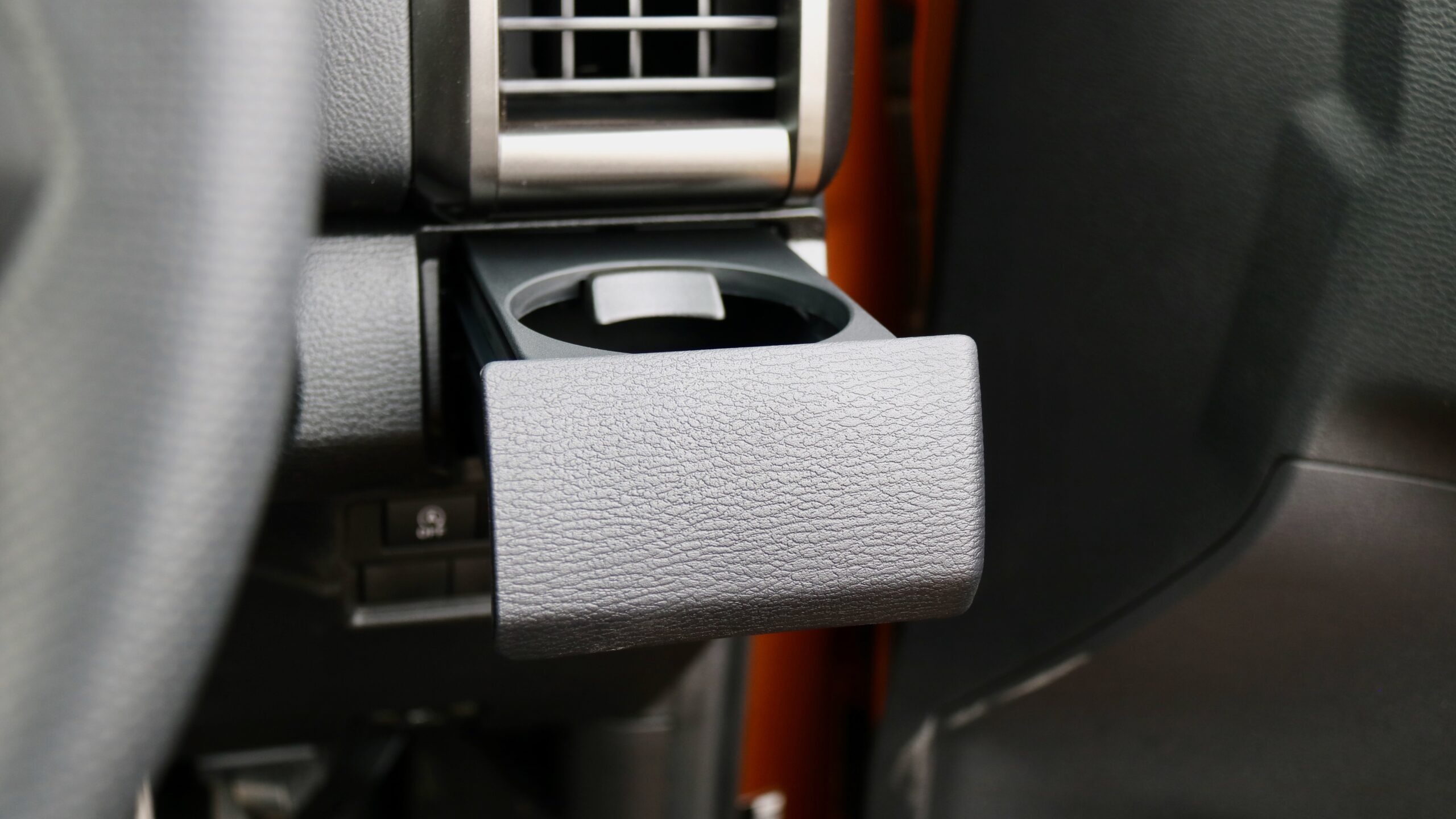
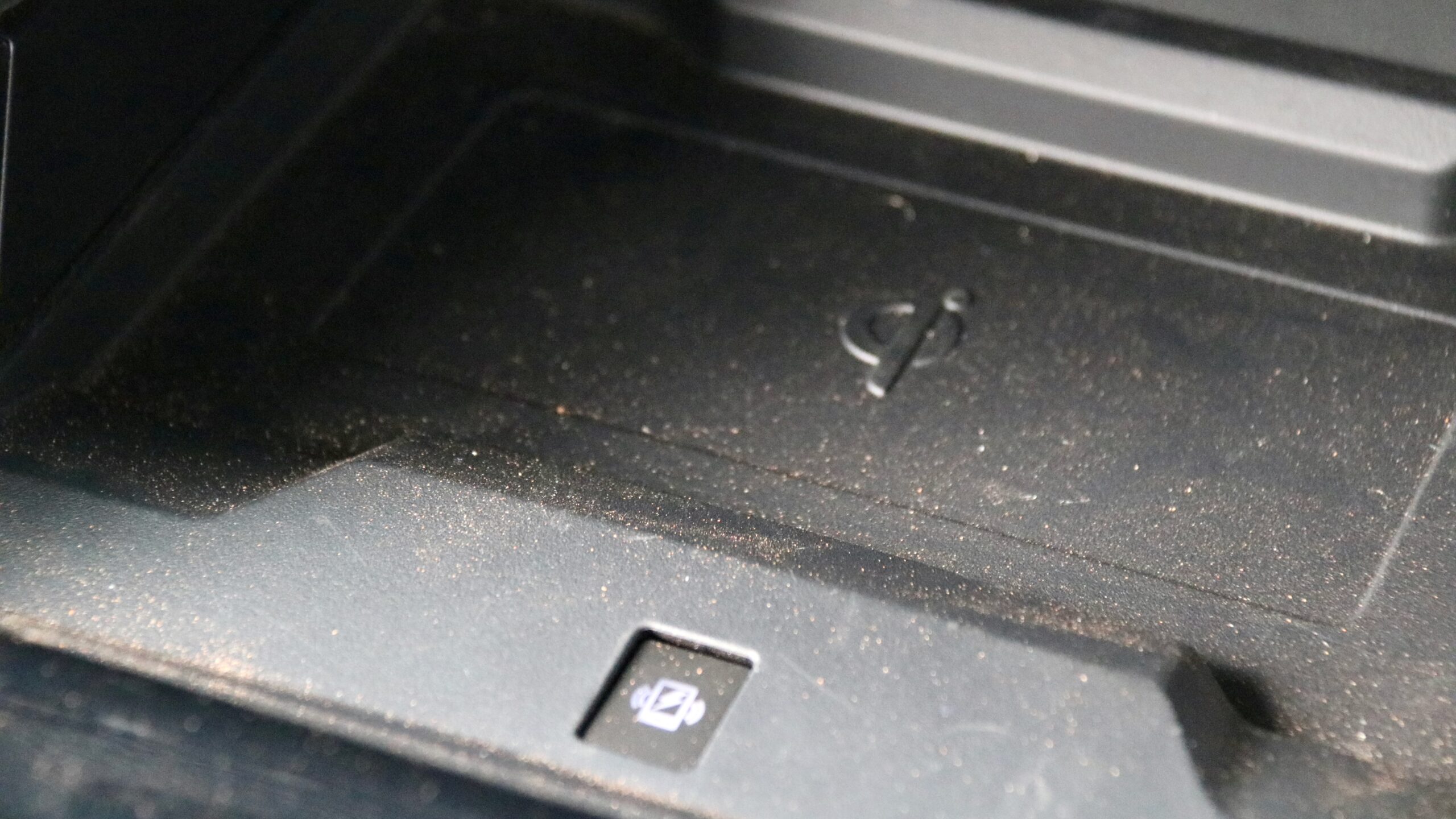
Triton GSR ($63,840 +ORC) adds:
- Black 18-inch alloy wheels and exterior trims like body arch flares, mirror caps and roof rails
- Rear sports bar
- Black leather upholstery with orange stitching
- Triton-branded floor mats
- Dark titanium interior trim inserts
- 2x dash-mounted cup holders
- 10-way electric driver’s seat
- Heated front seats
- Metallic paint
2024 Mitsubishi Triton colour range:
- White (solid – not available on GSR)
- Red (solid – only on GLX+ and GLS)
- Blade Silver Metallic: $740 (not on GSR)
- Graphite Grey Metallic: $740
- Impulse Blue Metallic: $740 (GLX+ and GLS only)
- White Diamond Prestige: $940 (GLS and GSR only, $200 for GSR)
- Black Mica Prestige: $940 (not for GLX, $200 for GSR)
- Yamabuki Orange Prestige: $200 (GSR only)
As for rivals, there are a plethora of new utes available on the new car market, with many sitting high on the monthly registration numbers: the top-selling Ford Ranger and its second-placed Toyota HiLux rival are proof of that. But because both the Ranger and HiLux are considerably more expensive than the Triton in equivalent specifications – a Ranger XLT 2.0L bi-turbo is around $70,000 drive away, which is a good $6,000 more than the Triton GLS – we consider the Isuzu D-Max and Mazda BT-50 twins to be the Triton’s closest rivals.
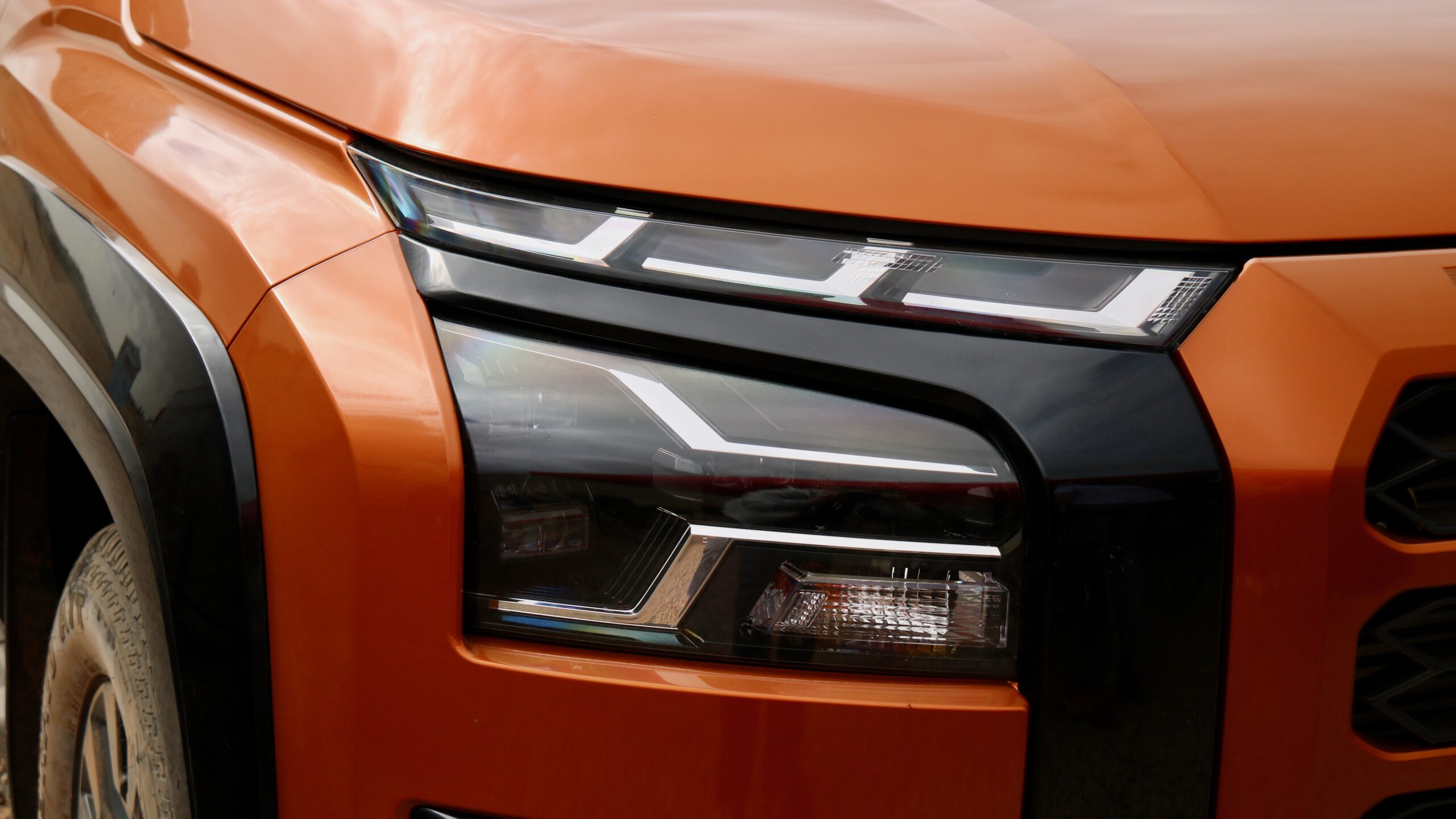
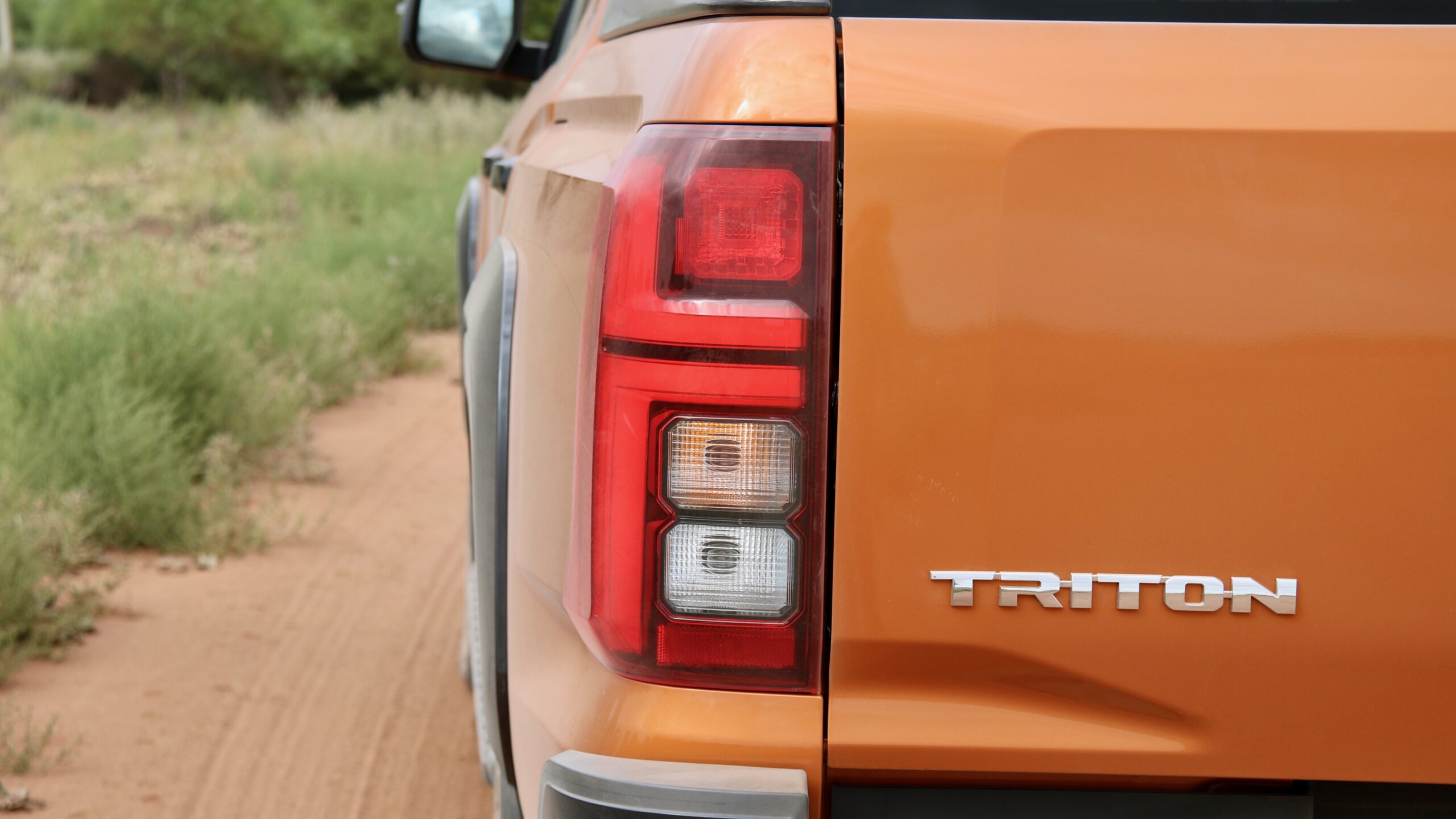
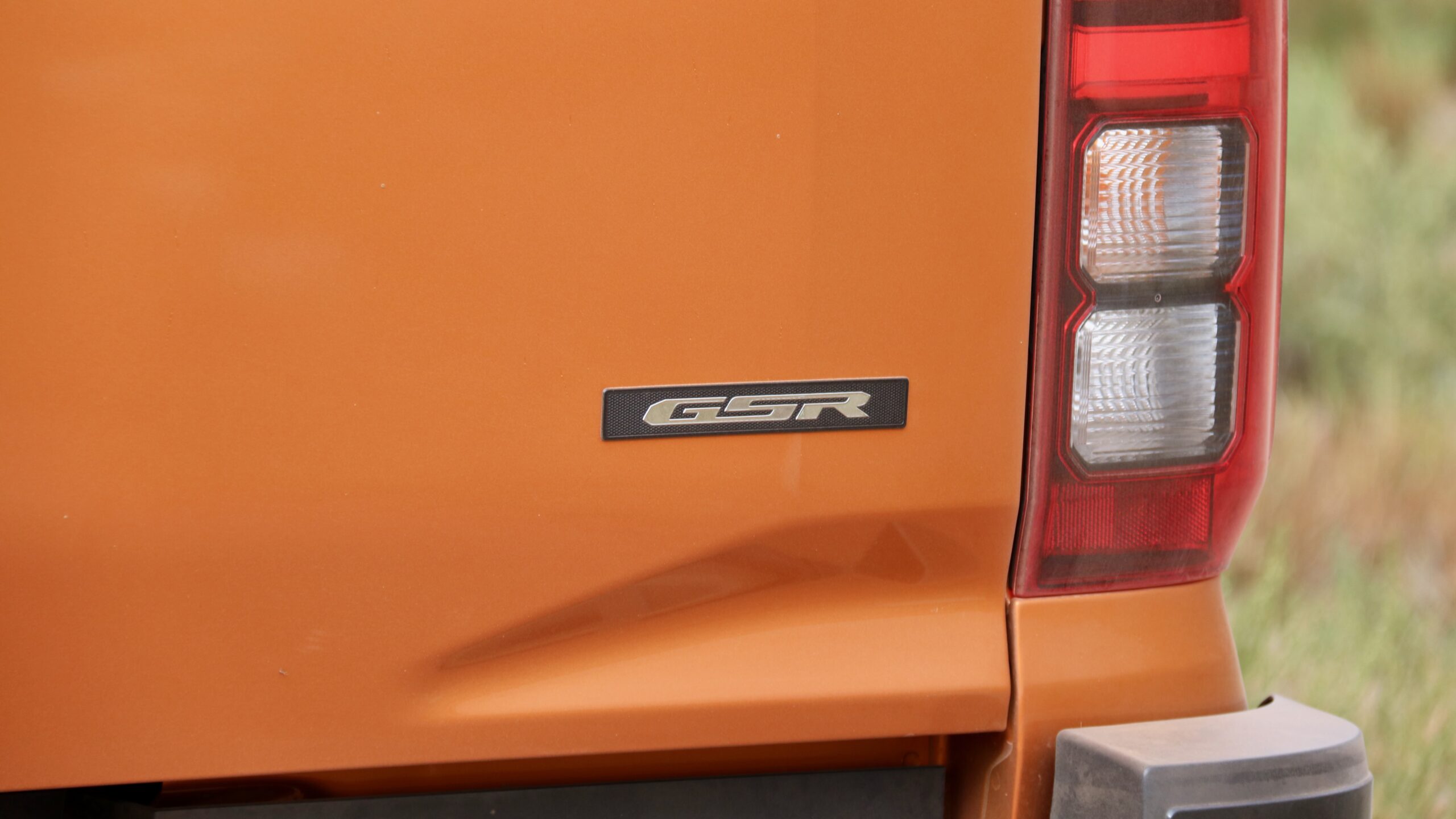
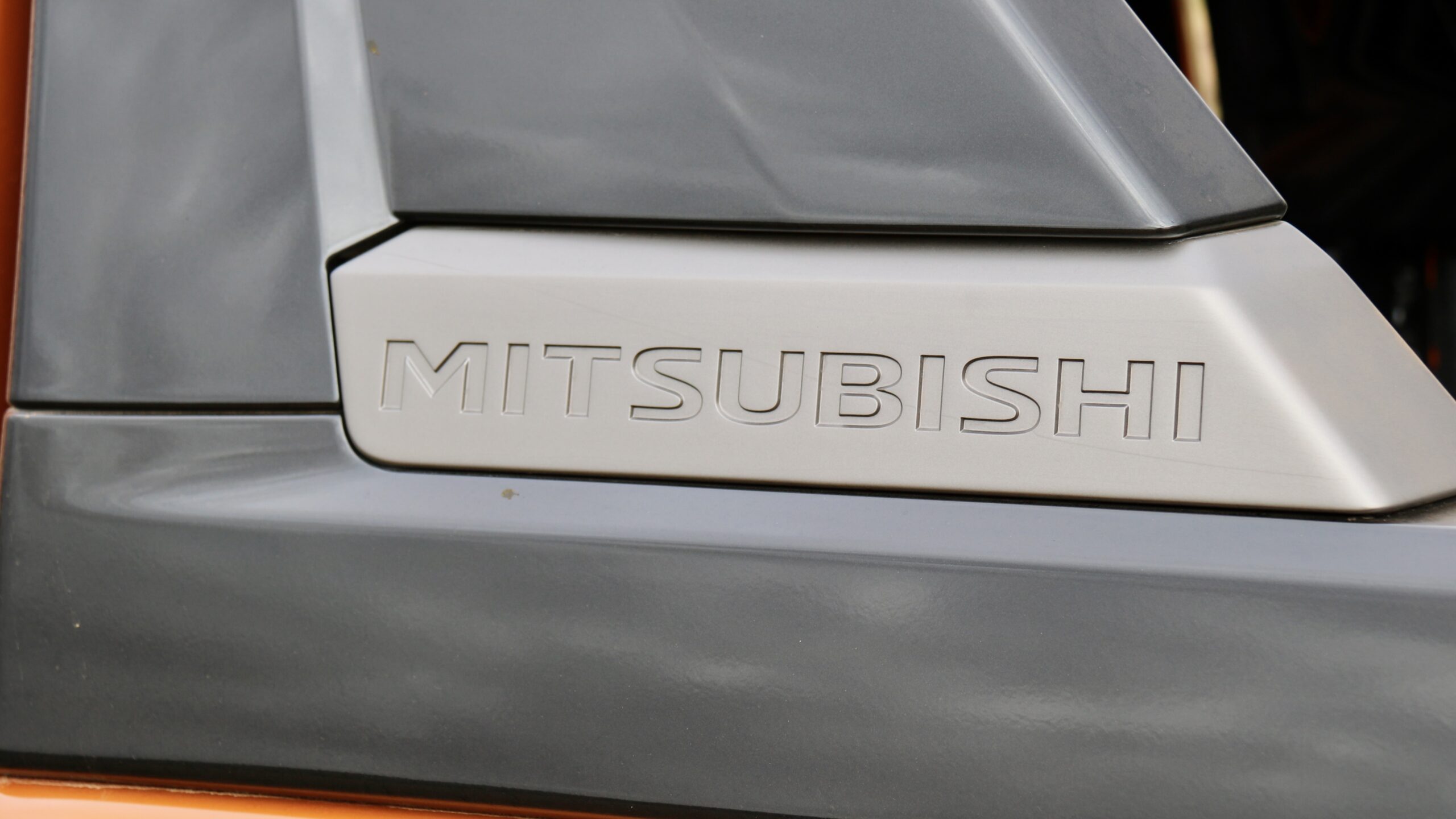
The BT-50 SP ($68,660 +ORC) is priced $4,820 more than the Triton GSR and while it adds remote start, two more speakers (eight in total) and a manual roller tonneau cover, it missed out on the Triton’s wireless phone charger, USB-C charging ports, centre airbag, 360-degree camera, automatic rear braking, driver monitoring, a larger driver’s display and auto-folding mirrors. So while the Triton has become more expensive, it’s still pretty good value in the against its main rivals.
What’s under the bonnet of the 2024 Mitsubishi Triton?
Under the bonnet of the 2024 Mitsubishi Triton is a new twin-turbocharged 2.4-litre four-cylinder diesel engine that makes 150kW of power (at 3,500rpm) and 470Nm of torque (between 1,500rpm and 2,750rpm), which is standard across the range and competes well in the segment – the BT-50 and D-Max twins use a larger 3.0-litre single-turbo diesel engine making lesser 140kW and 450Nm outputs, for example. The Triton is only offered with a six-speed torque converter automatic transmission, but a six-speed manual is due to join the range on some – hopefully including high-spec – variants later in 2024.
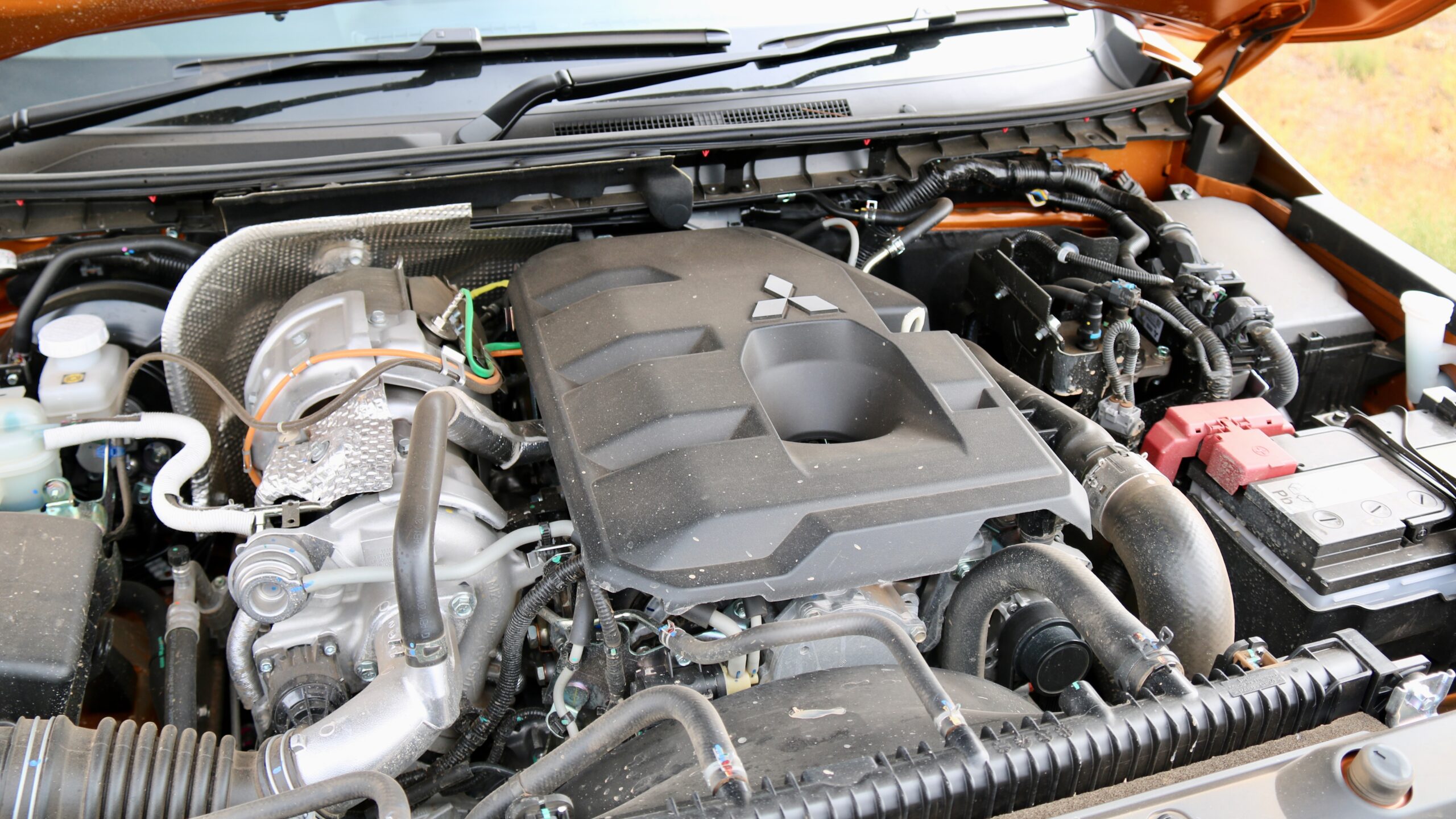
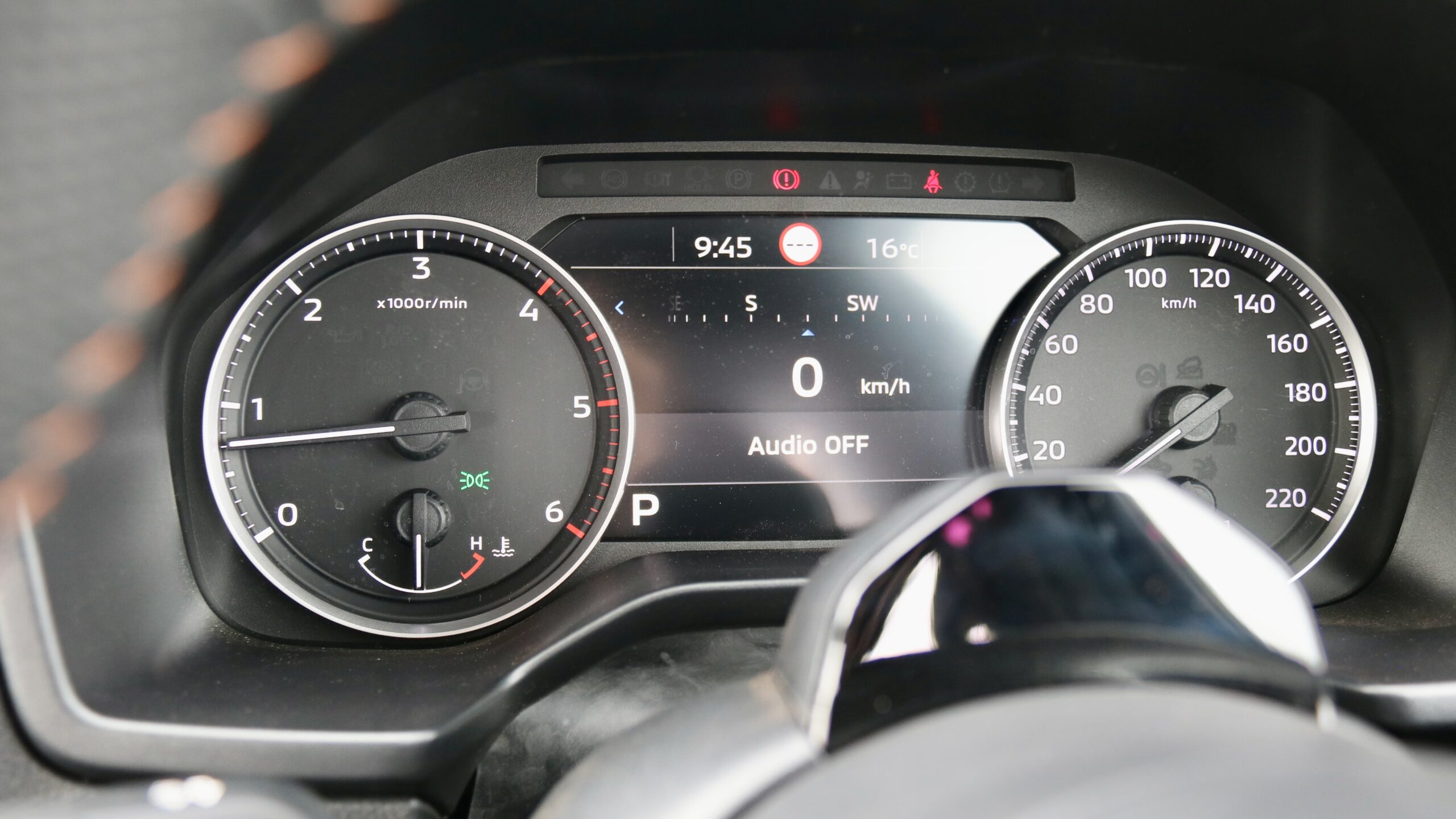
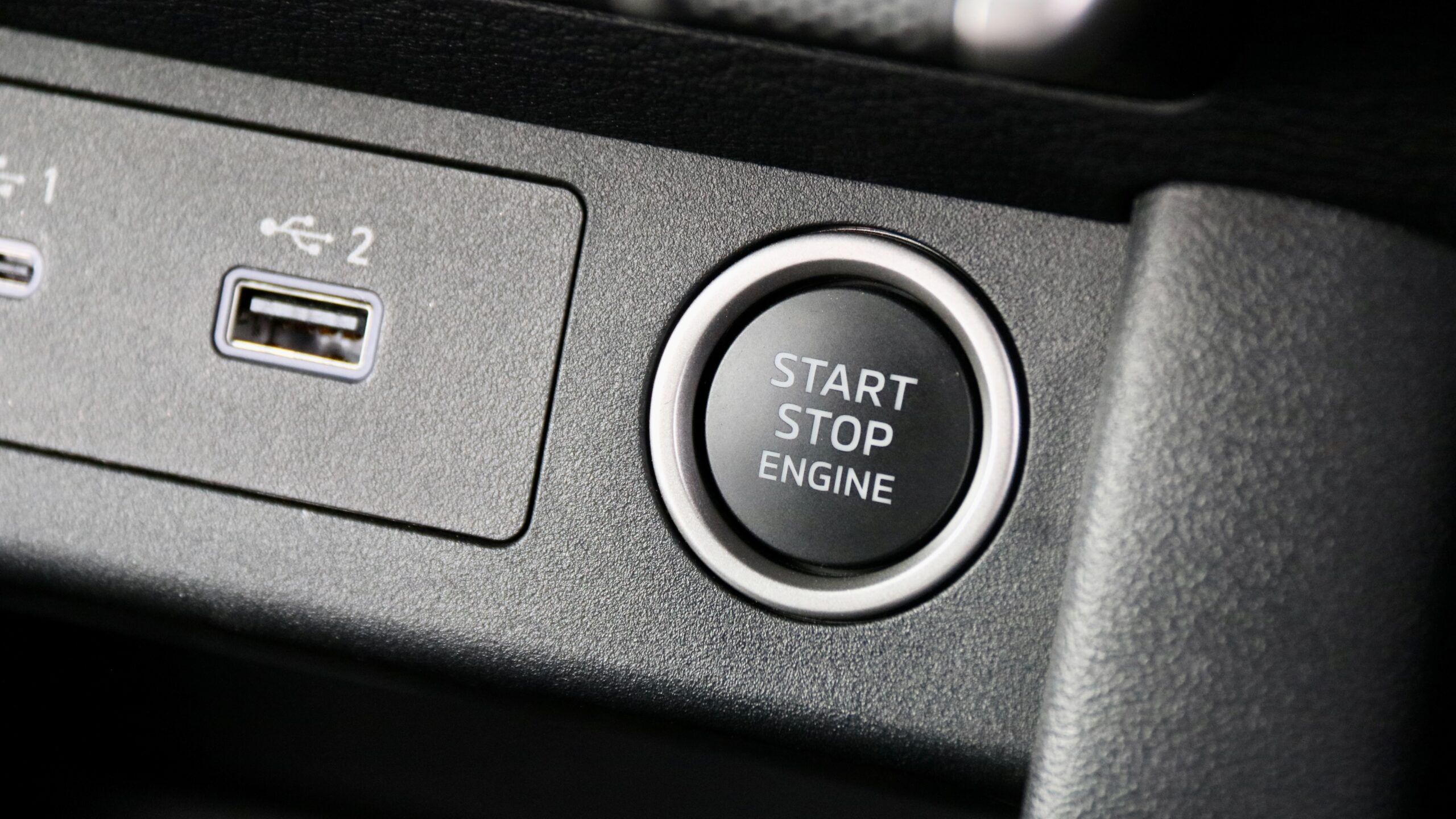
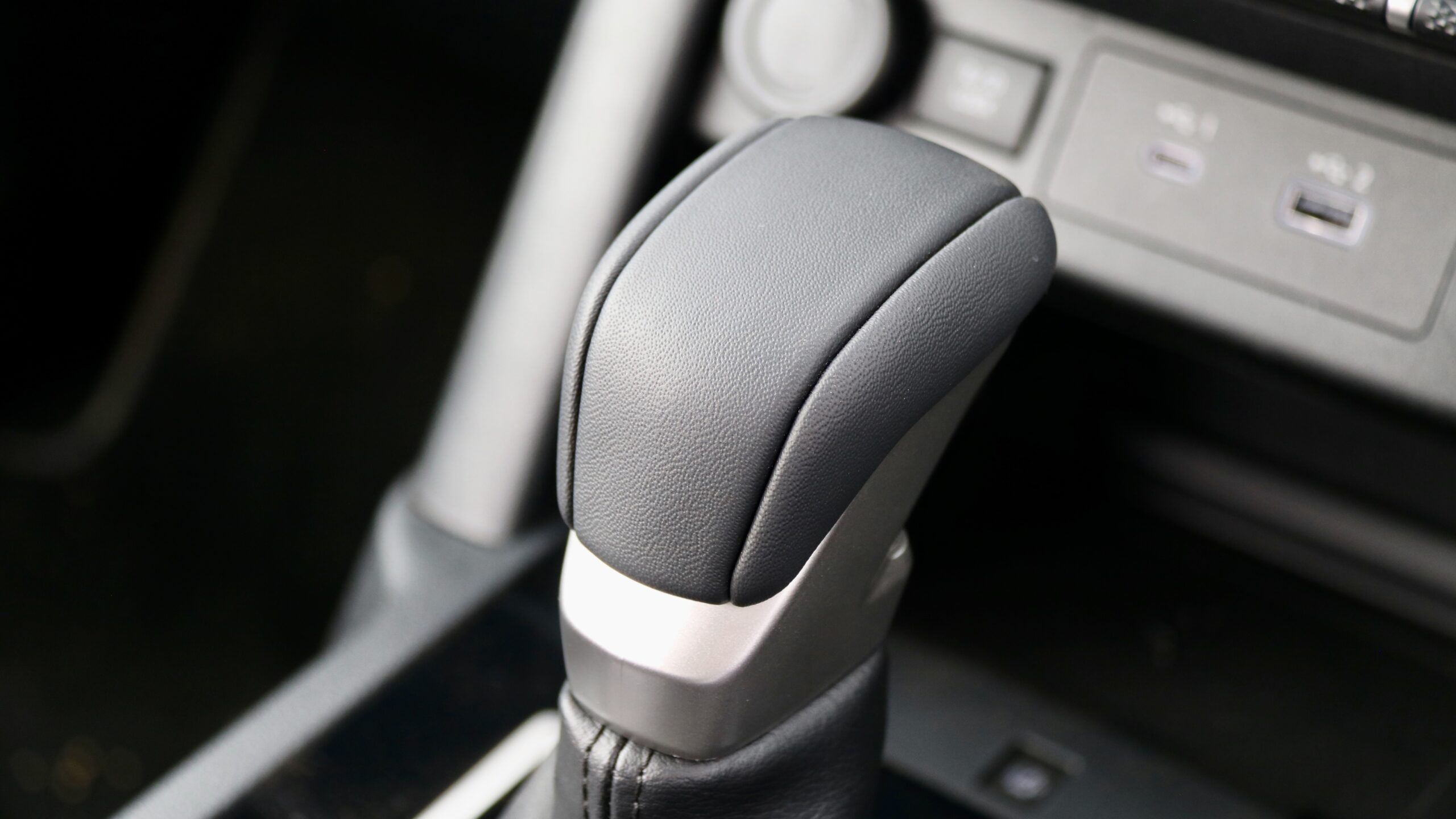
The engine in the 2024 Mitsubishi Triton is a definite improvement over the previous generation car and perhaps surprisingly, the biggest part of that improvement to us is its added refinement. Whereas the previous Triton’s engine was quite loud, no matter the speed or throttle input, the new model’s is much quieter and we think it’s best in class in that regard. While it doesn’t set your pulse alight with performance, the added grunt compared to the last Triton is noticeable and it feels more competitive in class, particularly against the old-feeling engine used in the BT-50 and D-Max.
The only transmission on offer for now is a six-speed torque converter automatic, which is the same Aisin unit used in the previous Triton, but revised for the new model. The revisions have made it more intuitive in its nature and it’s great at keeping the engine in its powerband. We also quite like how smooth the gearbox gating is and going from park to drive – for example – unlike the clunky lever in the D-Max and BT-50. Mitsubishi has also upgraded the Triton’s braked towing capacity and it now matches class leaders at 3,500kg with a 350kg maximum towball load. The gross combination mass (GCM) ranges from 6,210kg for the GLX 4×2 to 6,250kg for the rest of the range, both of which are higher than the maximum 6,000kg rating for the BT-50.
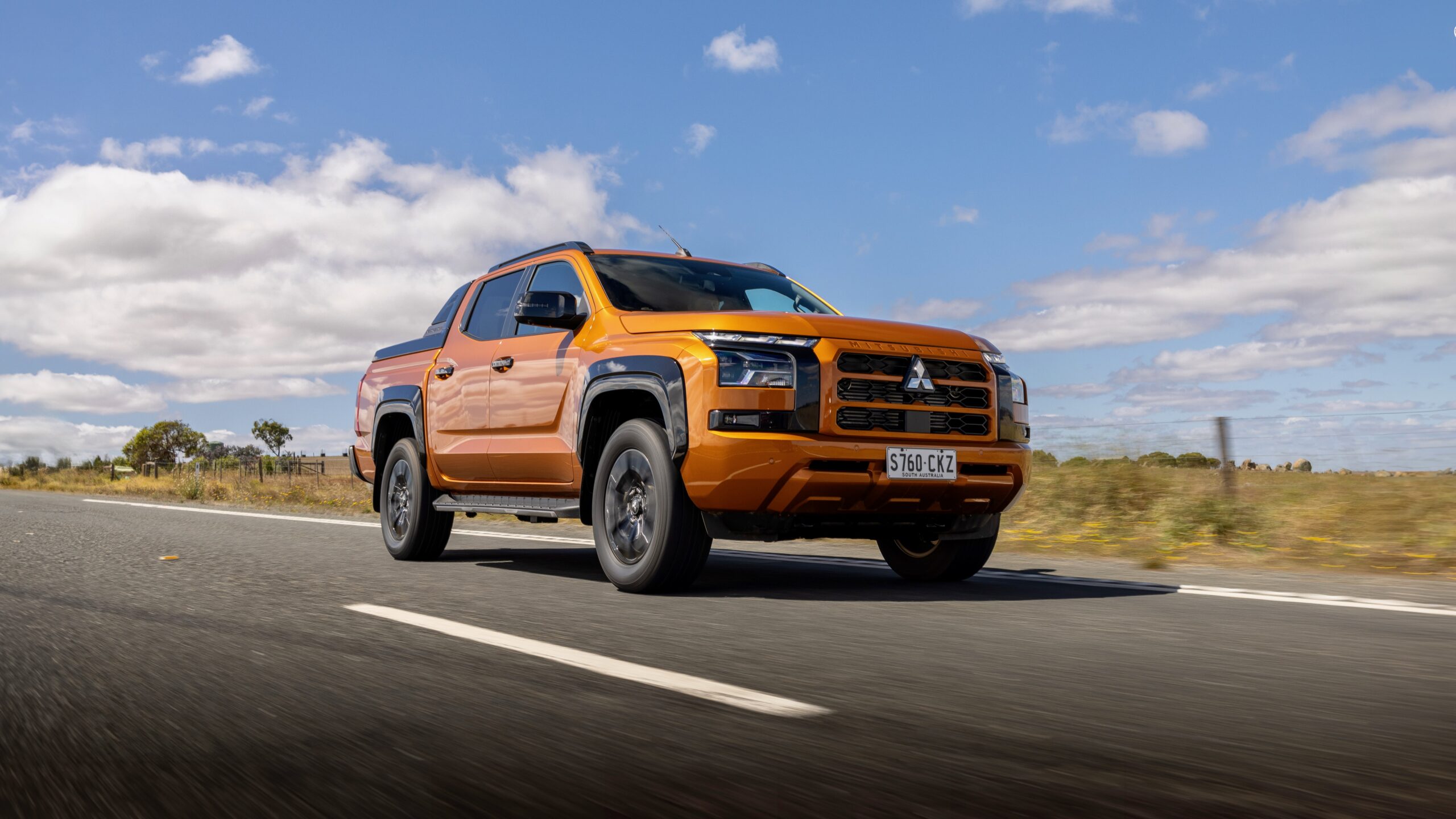
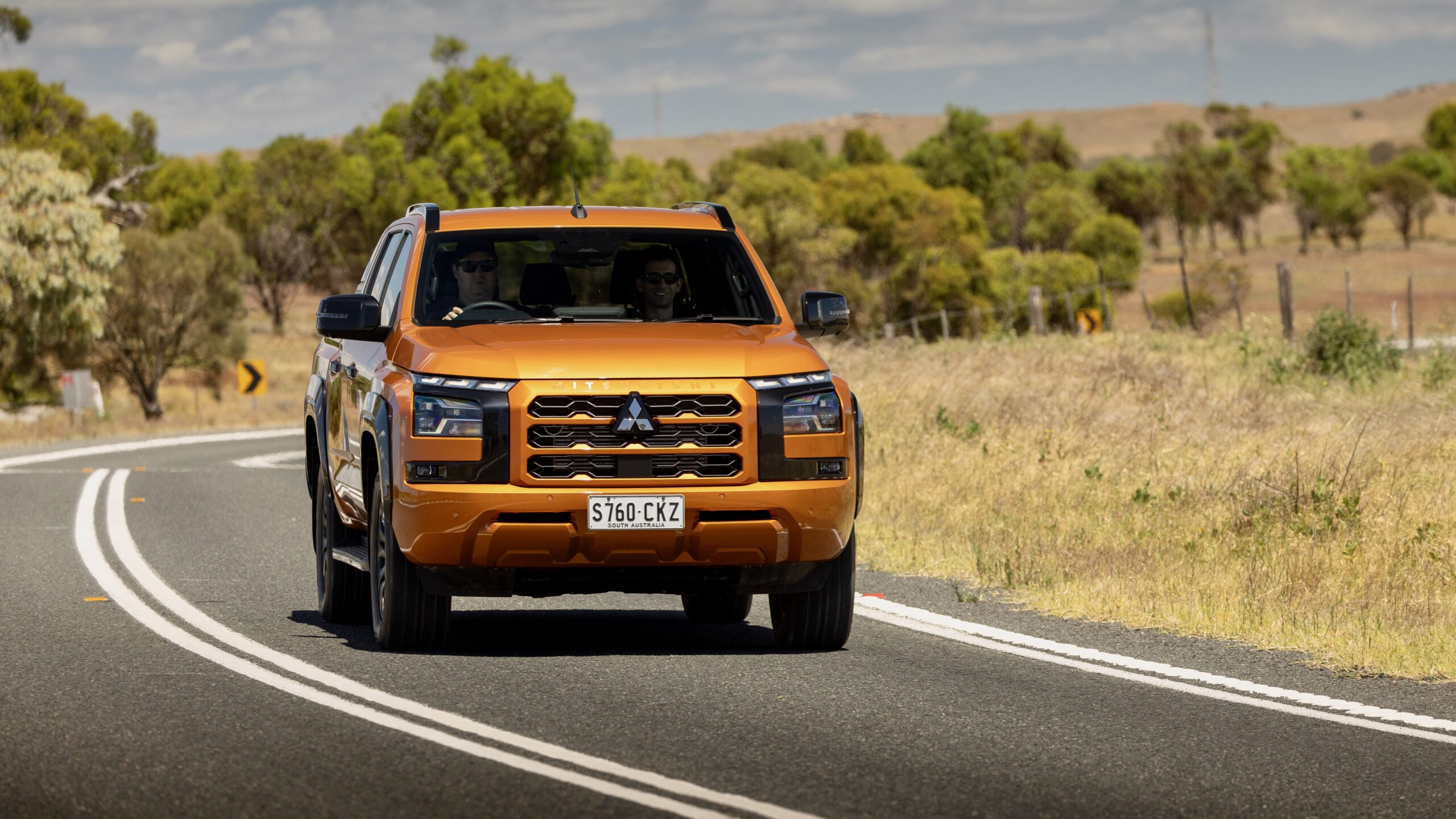
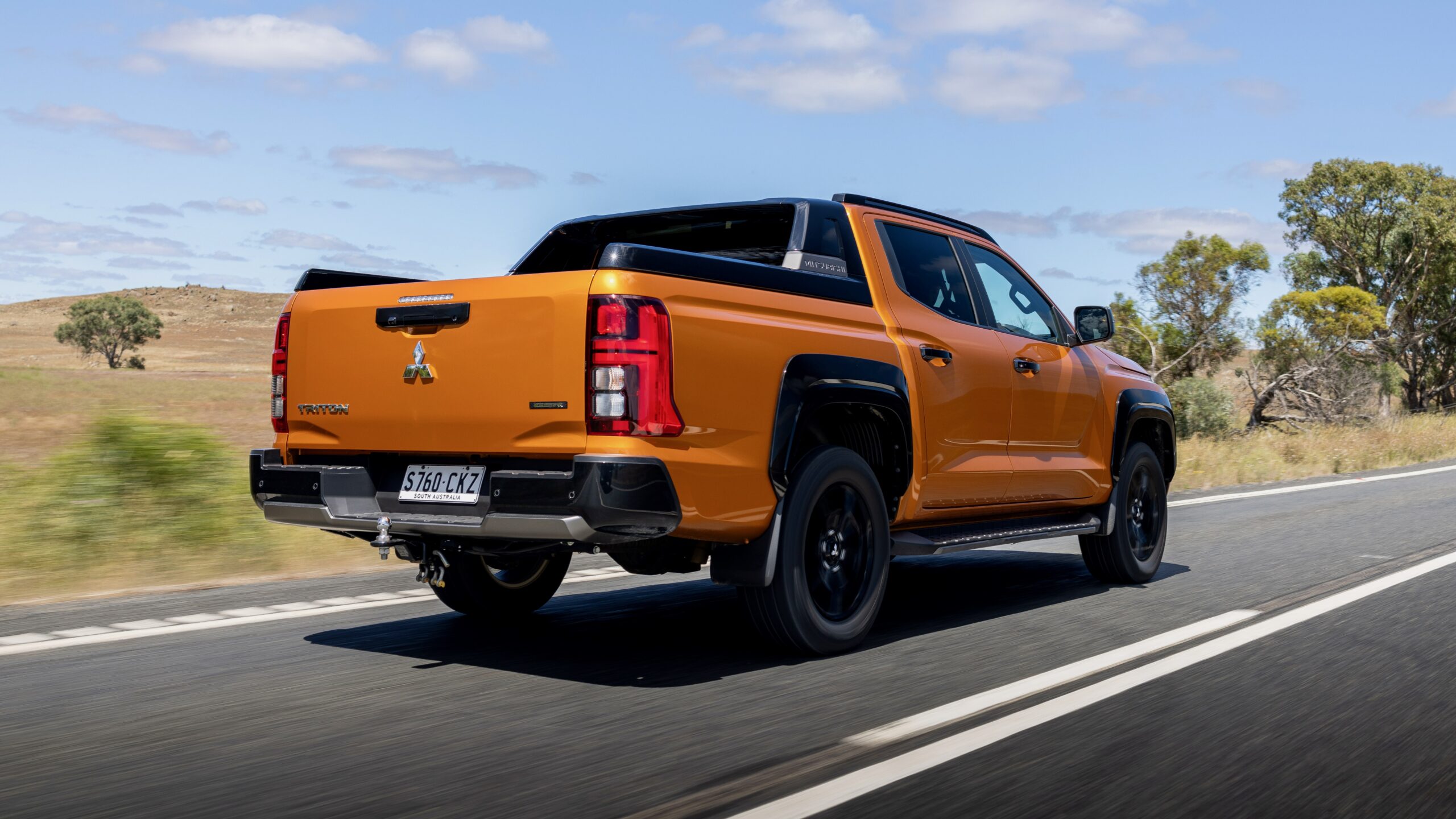
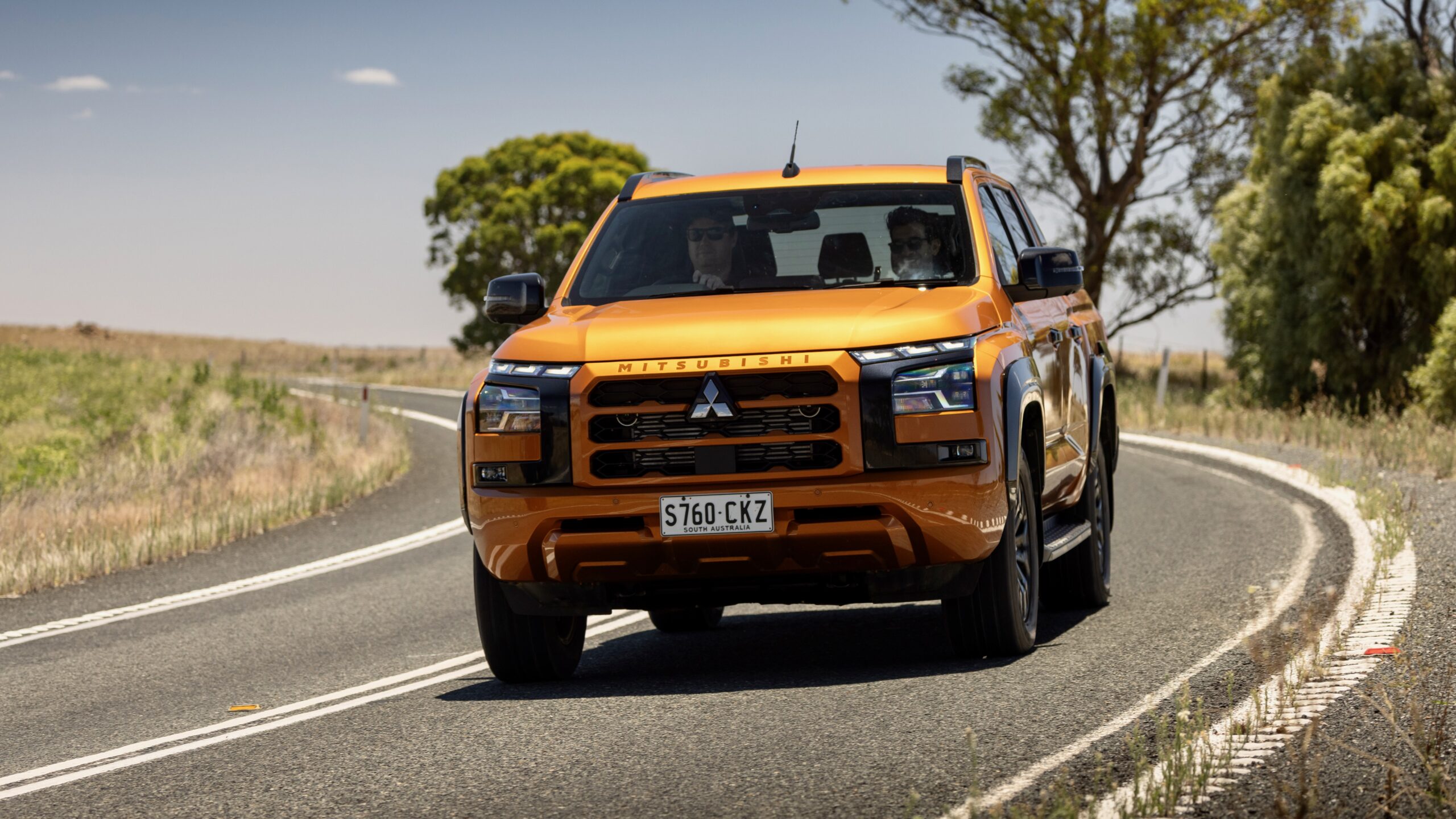
Like the performance, the efficiency of the 2024 Mitsubishi Triton has also been improved by a claimed 10 per cent to 7.5L/100km for 4×2 variants and 7.7L/100km for 4×4 variants, with claimed CO2 emissions falling between 199g/km and 203g/km – that’s more efficient than the less powerful BT-50 4×4, which is rated at 8.0L/100km and 207g/km. The new Triton is also rated to Euro 6b emissions standards and features an AdBlue tank too. We weren’t able to get a definite fuel consumption figure on the launch program – which included a lot of heavy off-road driving in test cars with less than 1,000km on the odometer – but will do so in our regular testing soon.
What is the 2024 Mitsubishi Triton like to drive?
Like we saw with the current Isuzu D-Max, the 2024 Mitsubishi Triton has become much more mature in just one generation. While there have been notable improvements in the ride and handling set up, the new Triton’s lack of engine and road noise is excellent thanks to a focus on refinement in its development. Mitsubishi also gave the new Triton a 40 per cent increase in body rigidity, which has helped on the road as it now feels far more planted and dynamic to drive than before. It’s also been made larger in most dimensions, with its 5,320mm length, 1,865mm width (1,930mm for the GSR because of its wheelarch flares), 1,795mm height (1,815mm for the GSR because of its roof rails) and 3,130mm long wheelbase 15mm longer overall, 50mm wider, the same height and 130mm longer in wheelbase. Its 228mm ground clearance and 30.4 degree approach and 22.8 degree departure angles are improved.
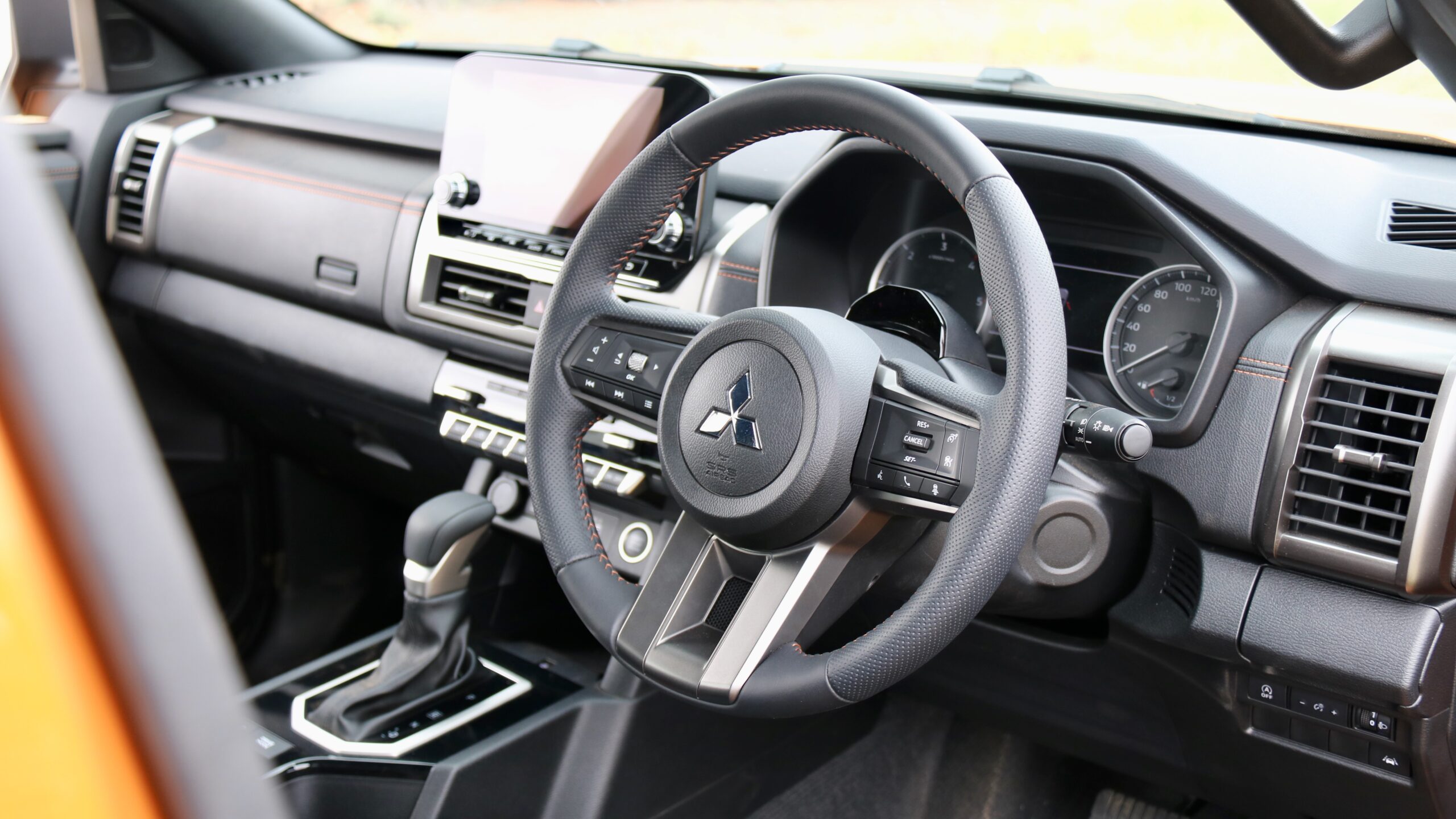
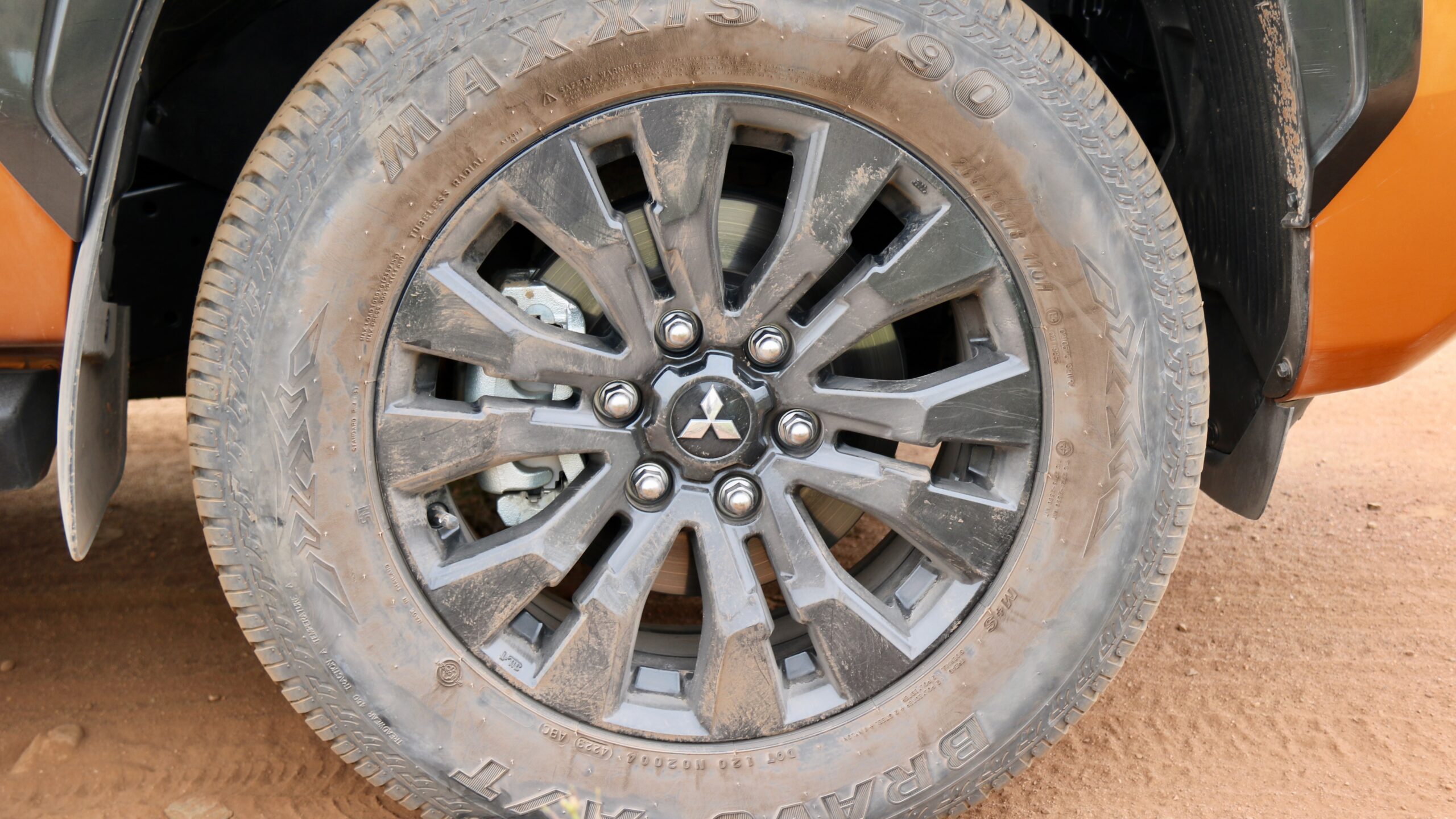
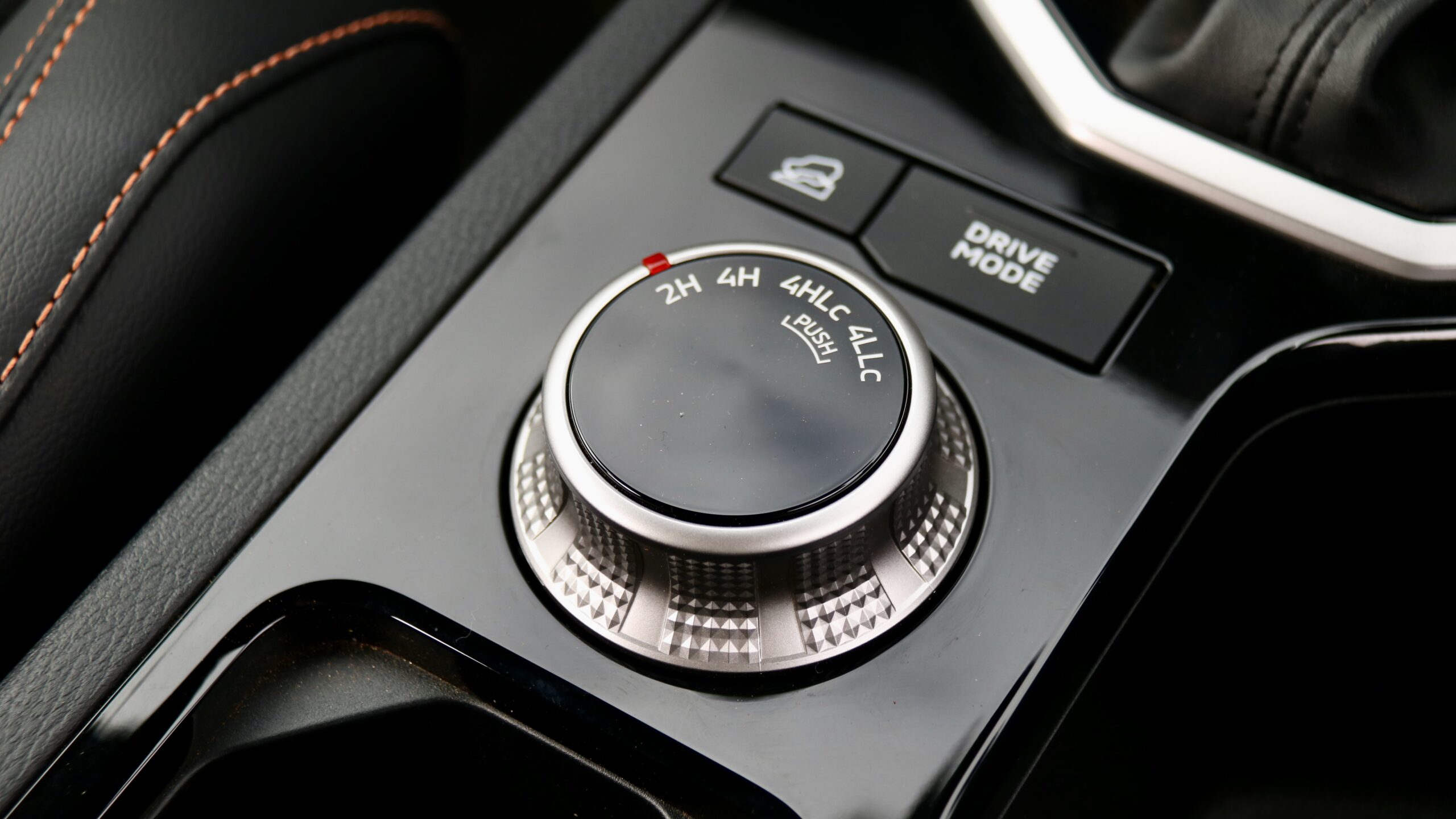
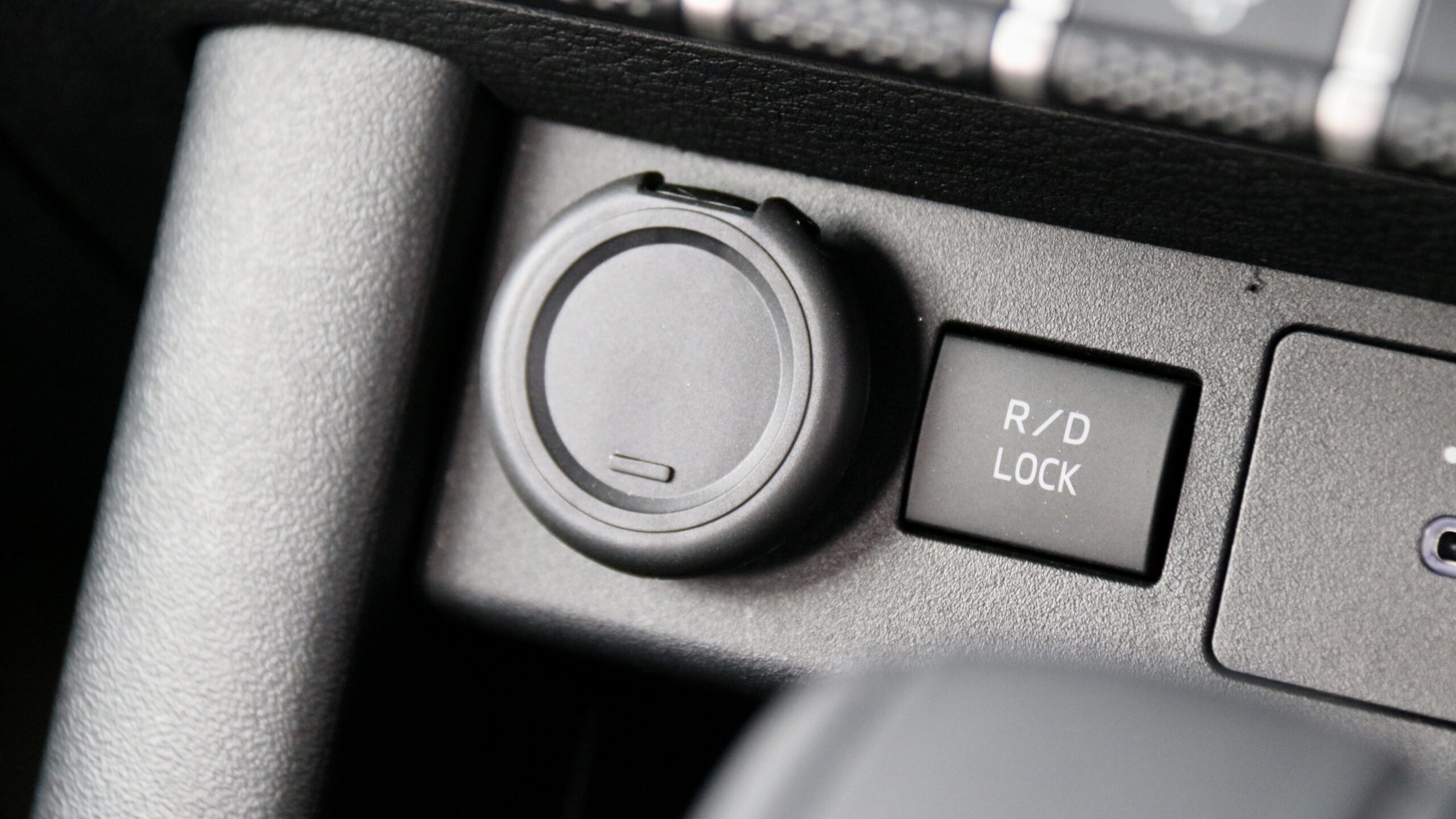
For keen drivers, the ute of choice is still the Ford Ranger but the new Triton is more generally comfortable than the BT-50 and D-Max and nicer to drive as well, except for the somewhat stiff low-speed ride. For the first time, the Triton’s steering is now electronic and in our opinion, it’s a big improvement over the lumpy and slow rack of the last-generation model as it’s quicker and offers more natural weighting. One feature we quite like is the inclusion of the company’s Active Yaw Control, which is a system that was first launched with the Lancer Evolution sports sedan and aims to keep the vehicle driving in a straight line through brake torque vectoring the front wheels. On dirt roads, you can feel it nipping at the wheels in a subtle way and it’s great.
On the launch of the 2024 Mitsubishi Triton, we ventured into country South Australia to test its off-road capability. Mitsubishi has reportedly improved the four-wheel drive system thanks to its new driving modes and we were impressed with its off-road capability. In the rocky and dusty terrain we drove though, the Triton took it all in its stride – its low-range gearing is easy to activate thanks to the controller wheel on the centre console, while the off-road modes vary the traction control based on the terrain selected. As Mitsubishi said, the Triton’s four-wheel drive system hasn’t changed all that much, but the inclusion of the new terrain modes and their tuning has made it even more capable off-road.
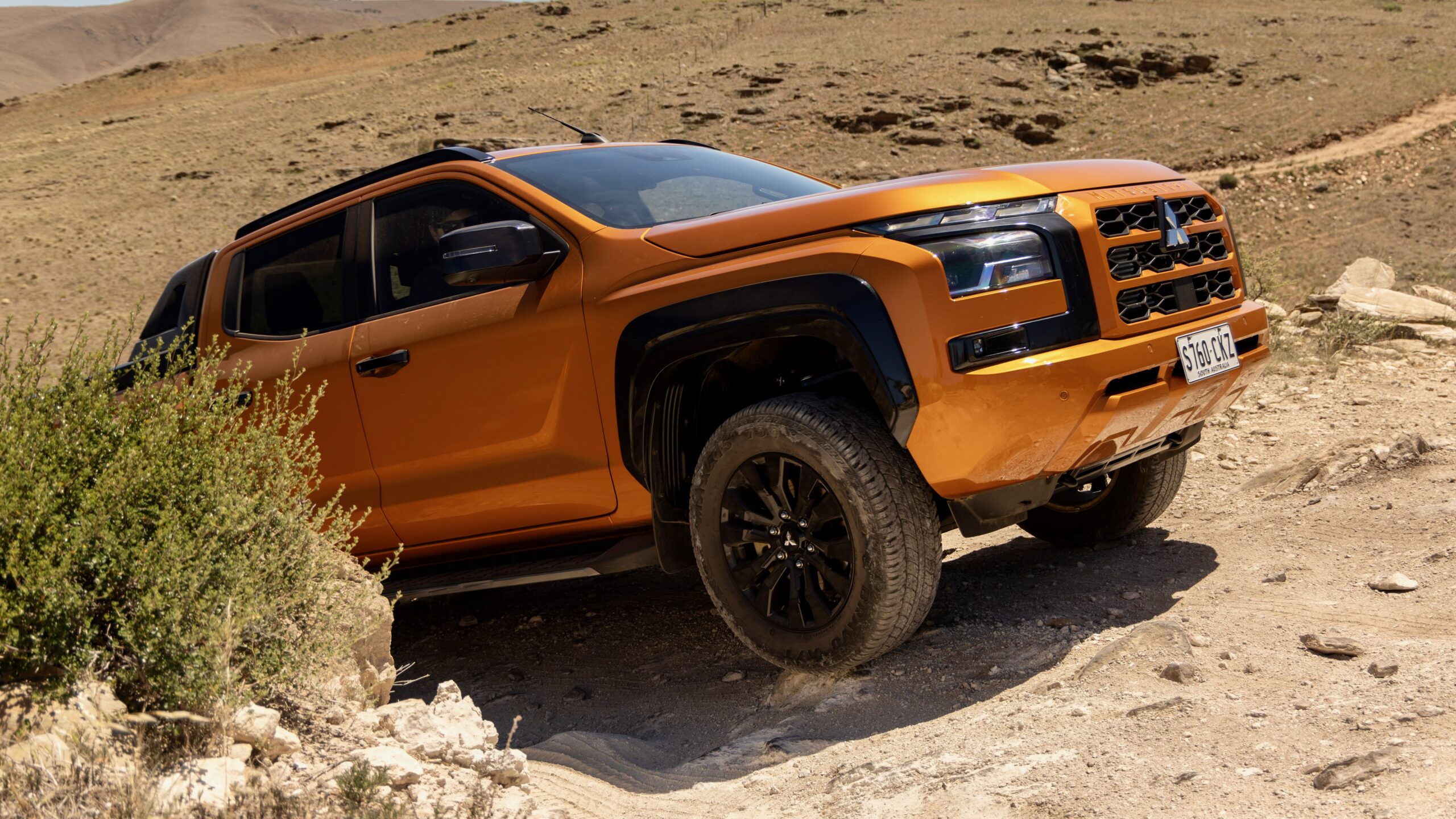
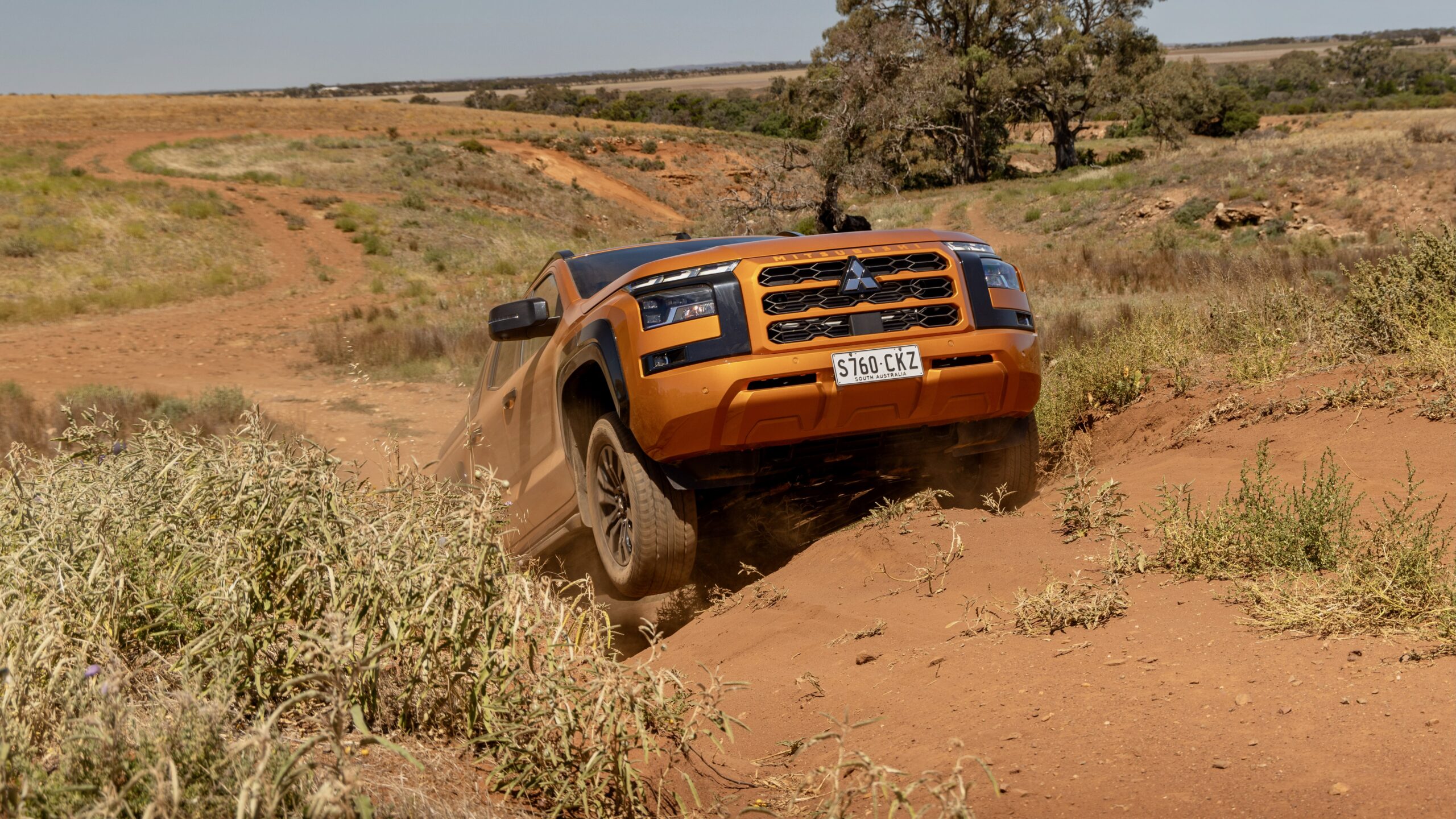
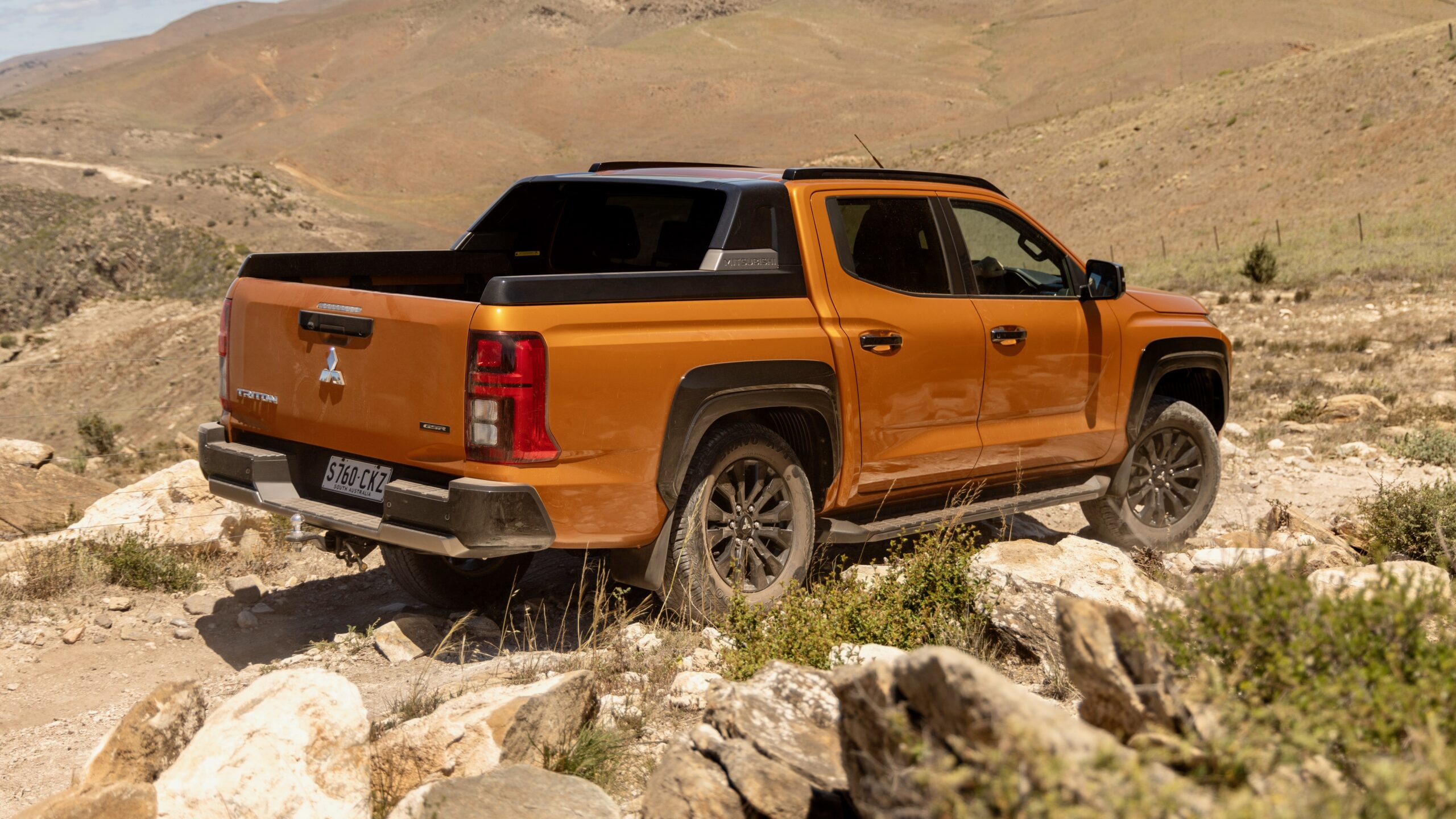
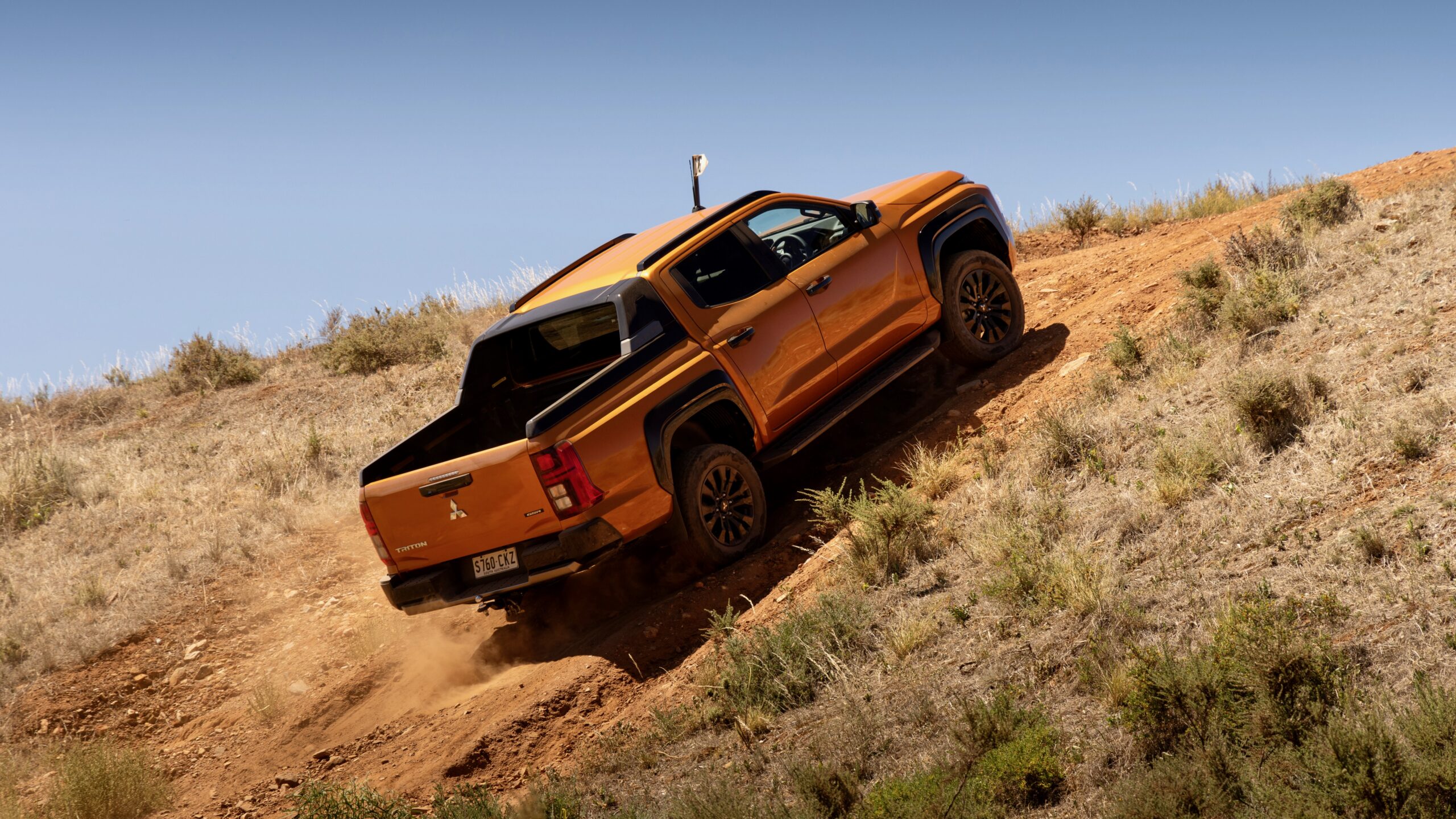
Back on the road, the new Triton impressed us with its great cross-country touring ability. Thanks to the aforementioned low noise levels, comfortable seats and good visibility, a Sydney to Melbourne stint would be easy. Mitsubishi has also significantly upgraded the Triton’s active safety equipment levels and it’s now one of the best in the segment thanks to the inclusion of features like a centre airbag, intersection assistance for the automatic emergency braking system and a 360-degree camera across the range. We’d like to see adaptive lane guidance added to the list and less sensitive driver attention monitoring (it even dings at you when you’re trying to deactivate it), but it’s otherwise comprehensive.
How comfortable is the 2024 Mitsubishi Triton?
While there have been improvements to how the new Triton drives, the biggest improvement for us is on the inside with its new dashboard layout, new infotainment system, higher quality materials, improved ergonomics and added practicality compared with the old model. While not every surface of the new Triton’s cabin is covered by soft touch materials – in fact, only the dashboard fascia and door card trims feature soft touch materials through the use of faux leather trim – it’s still a big improvement on the previous model, which features hard cheap plastic throughout. Having said that, the old model’s soft touch kneepads are something we’d like to see in the new model.
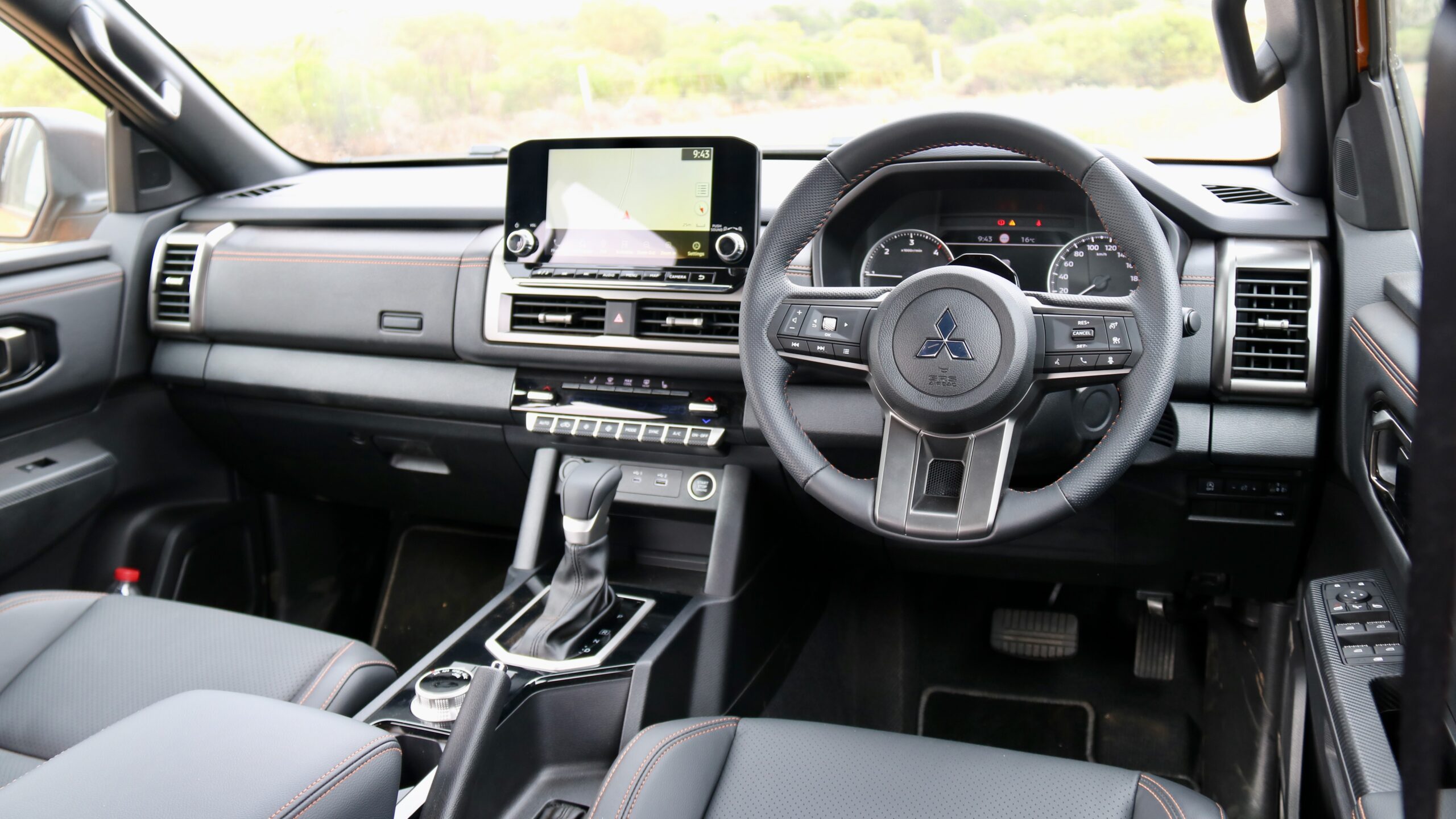
For practicality, the new Triton’s cabin is a solid step up over the last-generation model. Its door pockets alone are larger than before, and can hold 1.5L bottles and a clipboard as well. The cupholders in the centre console are deep, while there’s a tray underneath the dashboard, which features a wireless phone charger on the GLS and GSR. The box underneath the centre armrest is big – it can hold four small bottles – while the dual gloveboxes add further to the cabin’s practicality. The GSR also features two handy pop-out cupholders on the edge of the dashboard, which we’d like to see added to lower models.
We also appreciate how much better the new Triton’s cabin is ergonomically than before. The previous shape Triton’s gear lever and cup holders are mounted quite low so engaging with that area is a reach, but the new model’s centre console has been raised nicely to fit in the same level as the driver. In addition, all the Triton’s cabin buttons are designed to be used wearing gloves and while a lot of the switchgear is from the Outlander, it’s still quite easy to use.
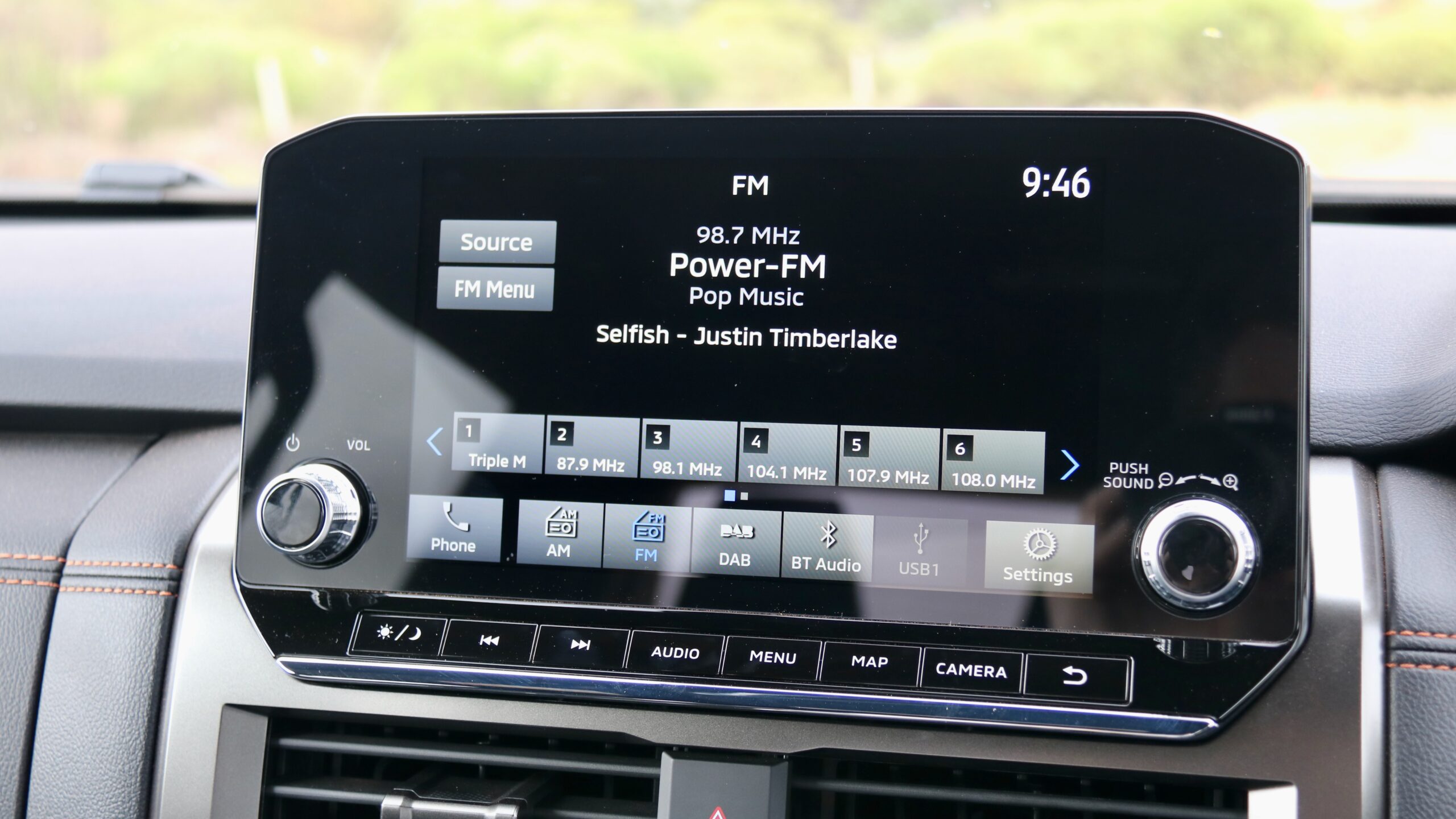
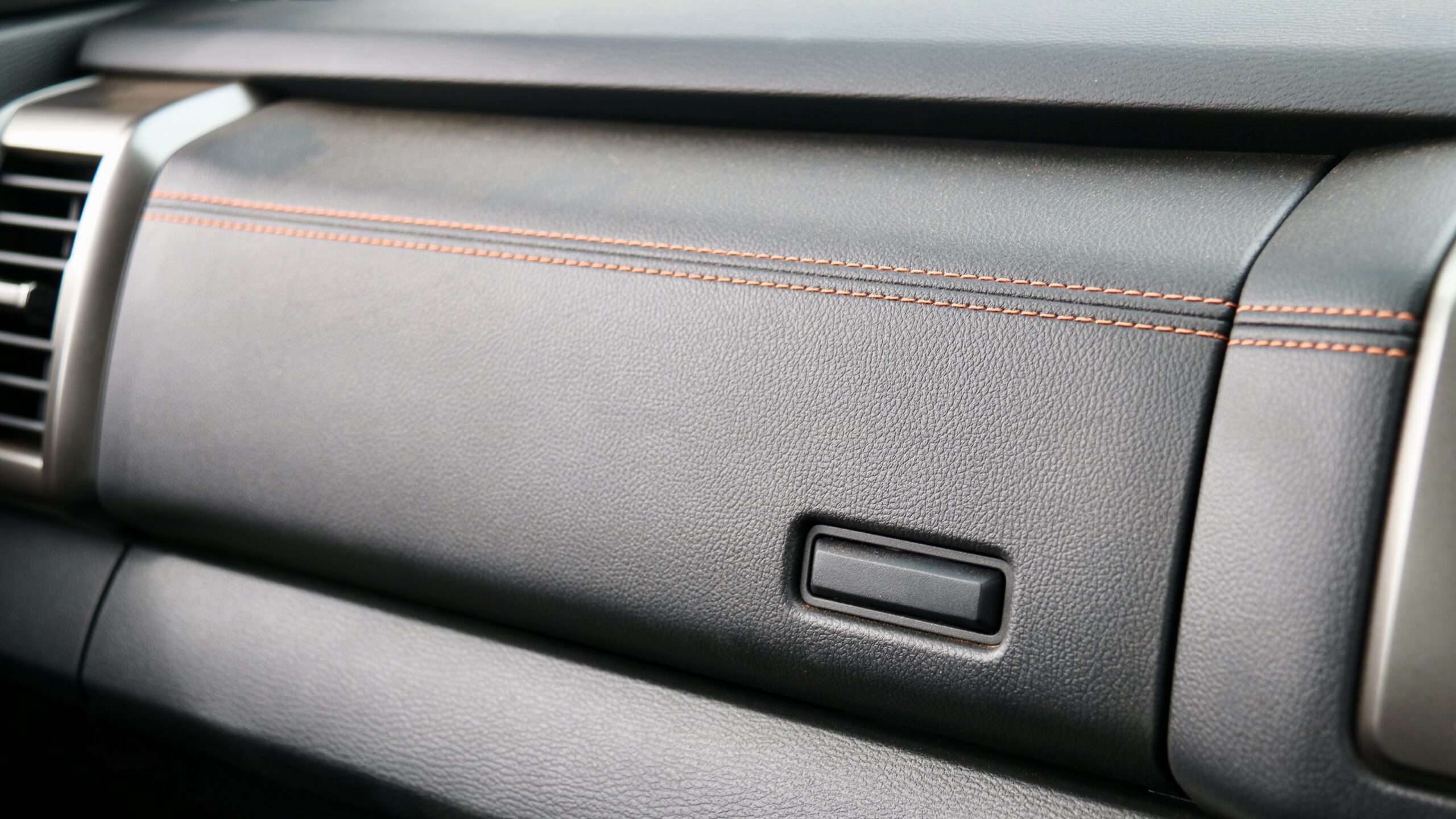
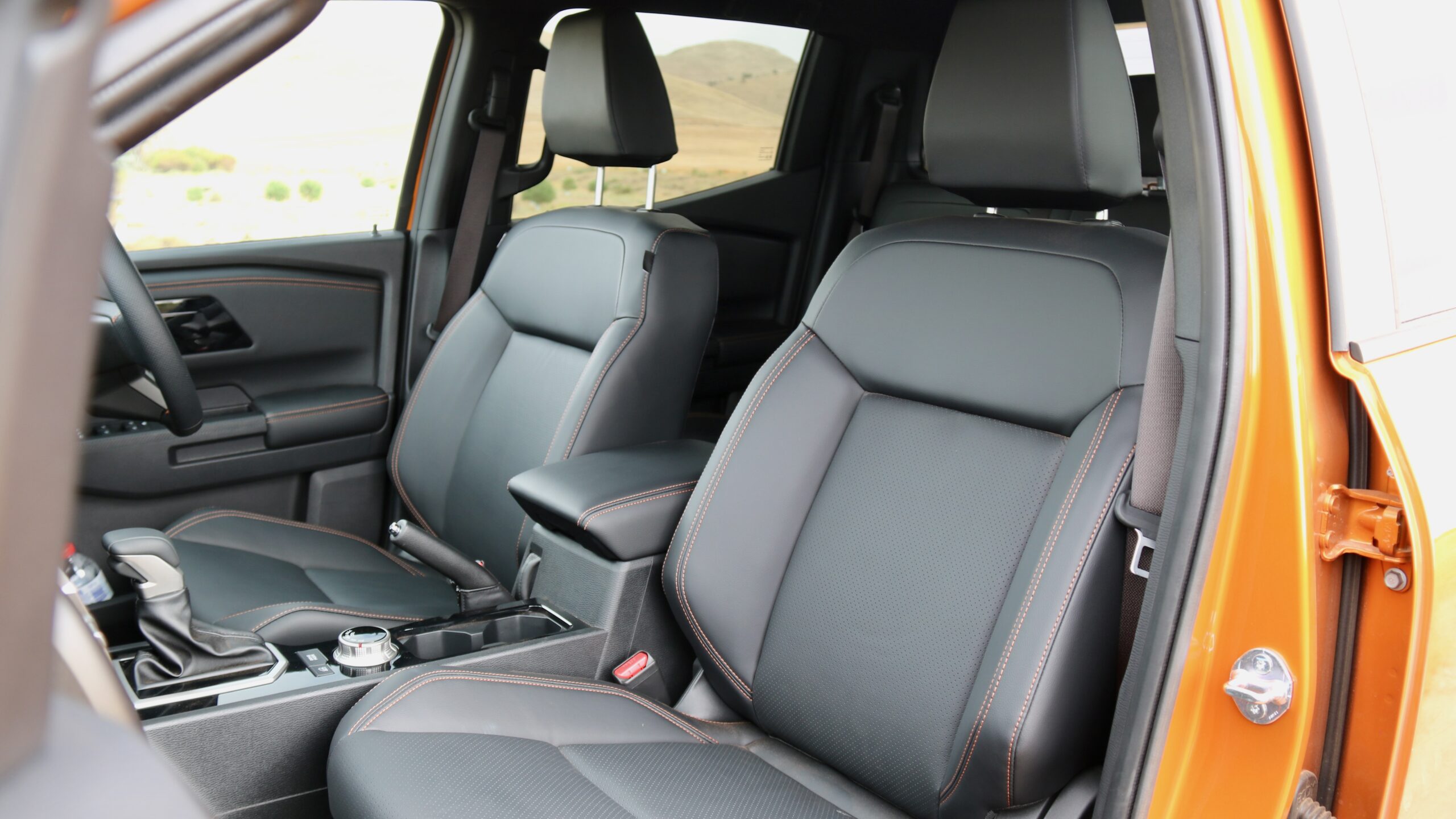
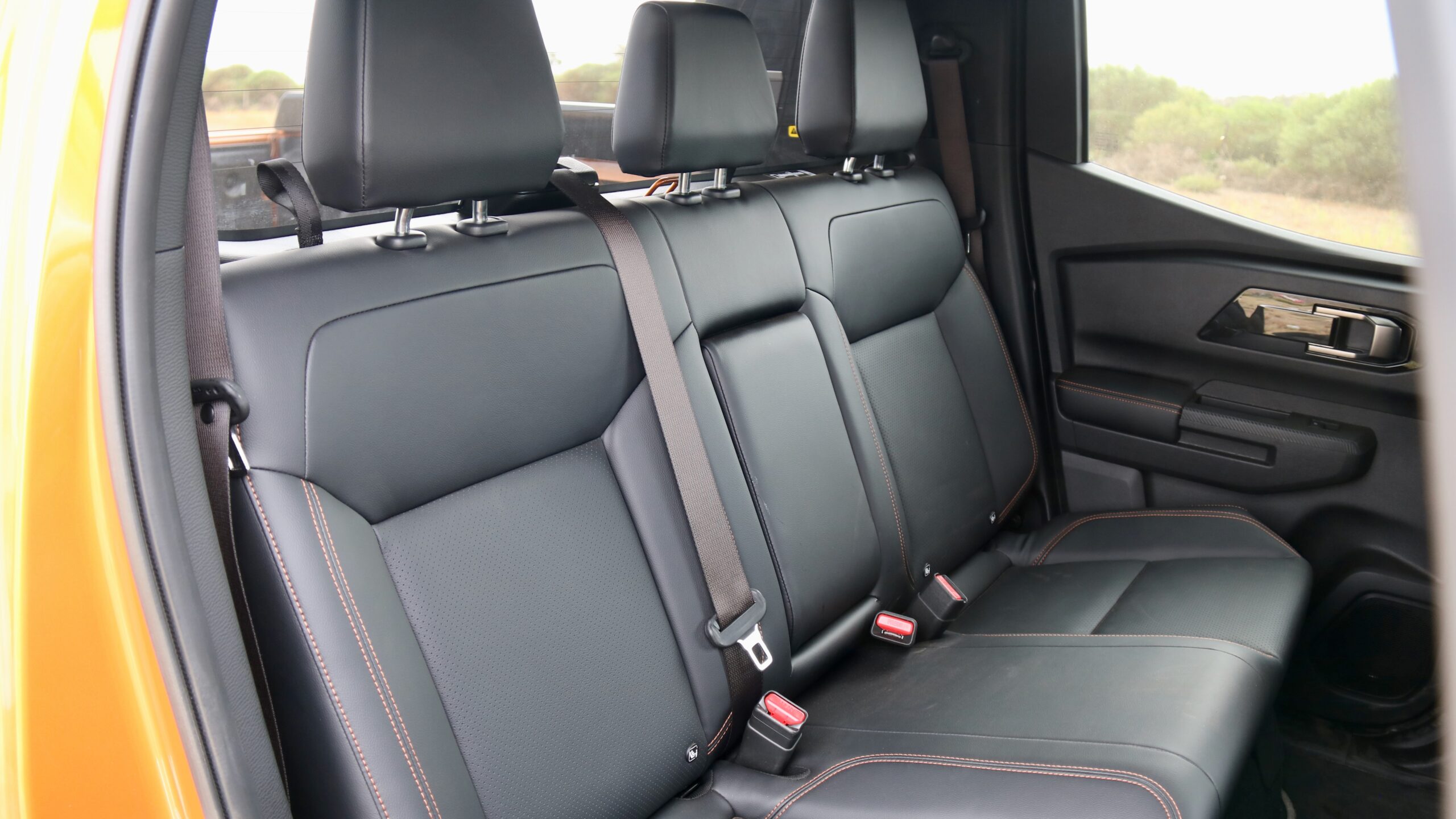
Centre of the Triton’s cabin is a 9.0-inch touchscreen with wireless Apple CarPlay, wired Android Auto, satellite navigation and AM/FM radio with DAB+ digital radio on the GLX+ and above. It’s identical to the system used in the Outlander SUV and it’s fairly intuitive to use, though it could be a bit quicker to respond to touch. In our opinion, it’s far superior to the complicated and slow system in the BT-50 and D-Max twins, though Ford’s Sync 4 software in the Ranger still reigns supreme in the segment. We’d also like to see features like live services – which features on Thai- and Japanese-spec Triton models – added to the spec sheet and while the six-speaker sound system is reasonable, a unit from a company like Bose would make it even better.
The rear seat of the 2024 Mitsubishi Triton is also a definite improvement over the model it replaces and it now offers one of the better rear cabin spaces in the segment thanks to its room and feature list. The Triton’s 130mm wheelbase increase has resulted in extra cabin space, and the room on offer for two six-footers is pretty good – fitting a third might be more difficult, however, thanks to the raised centre seat.
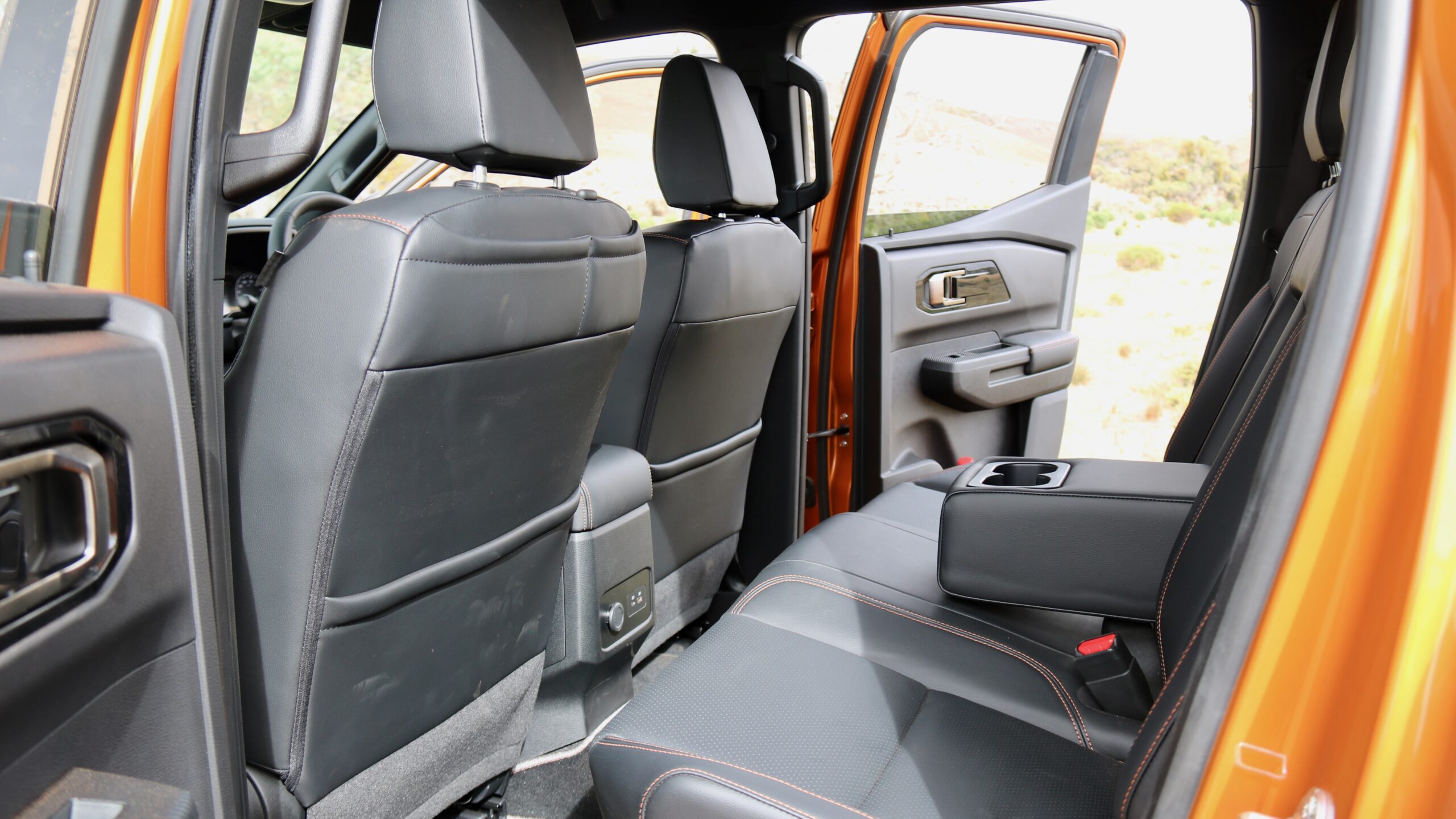
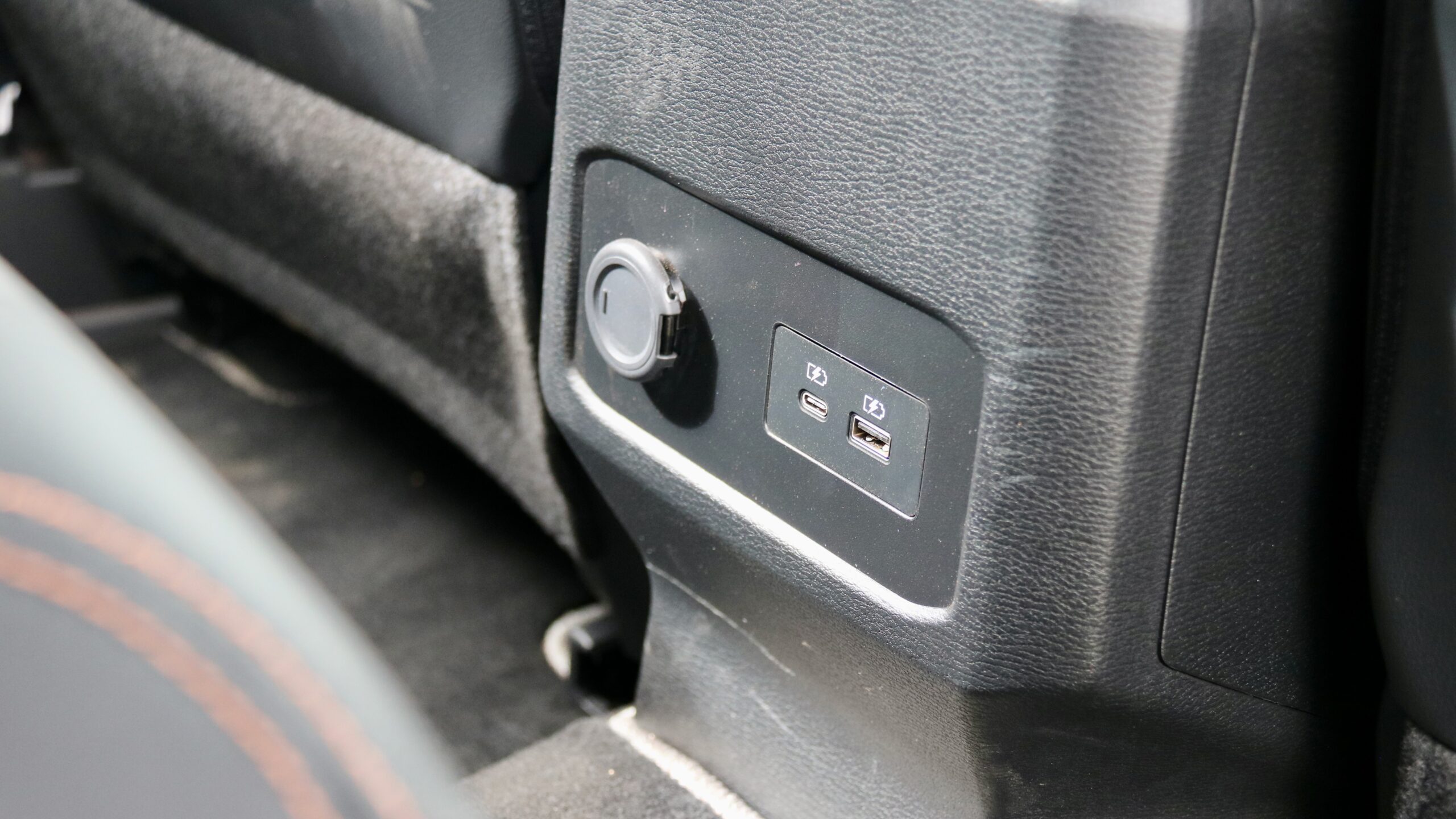
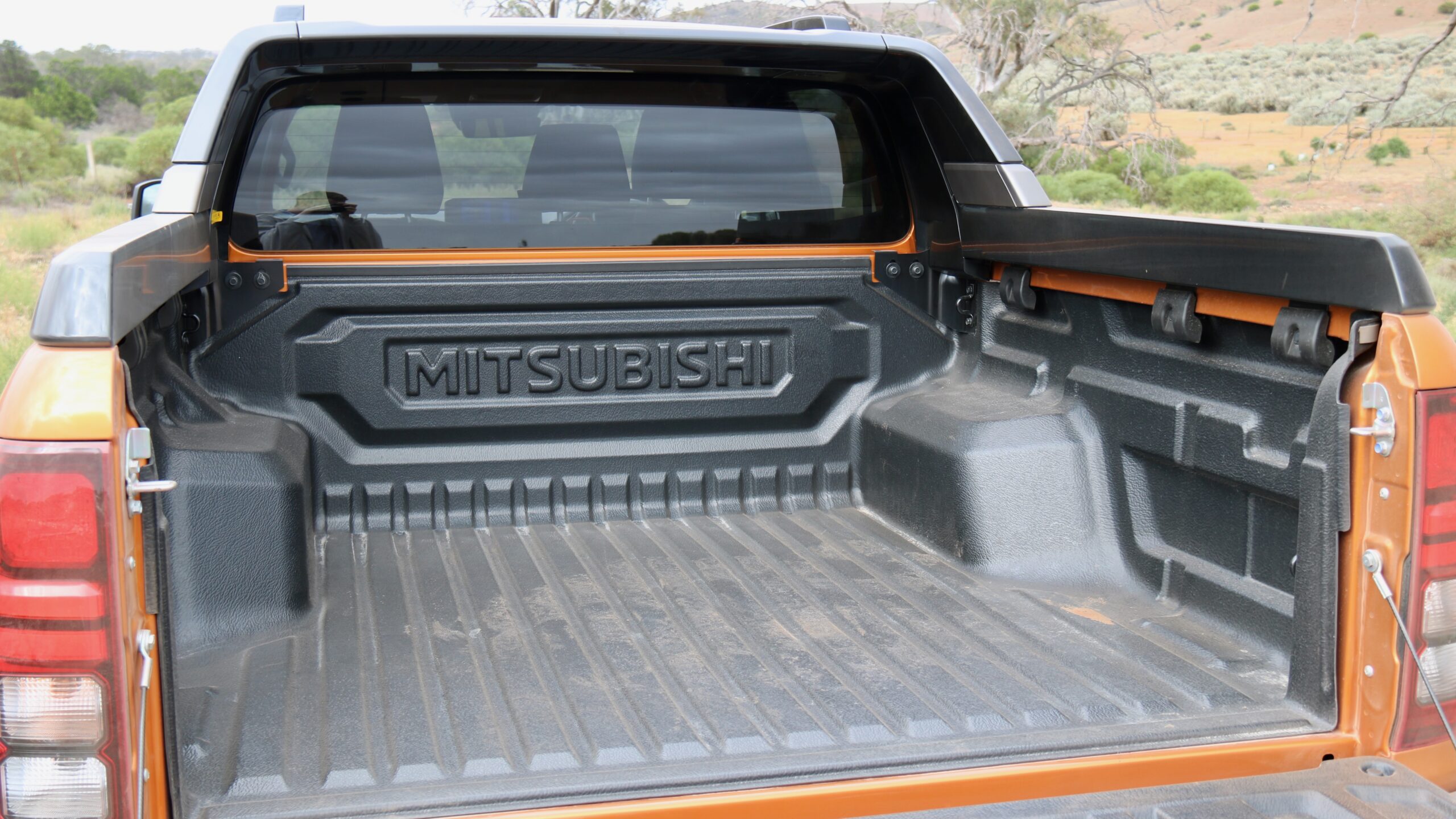
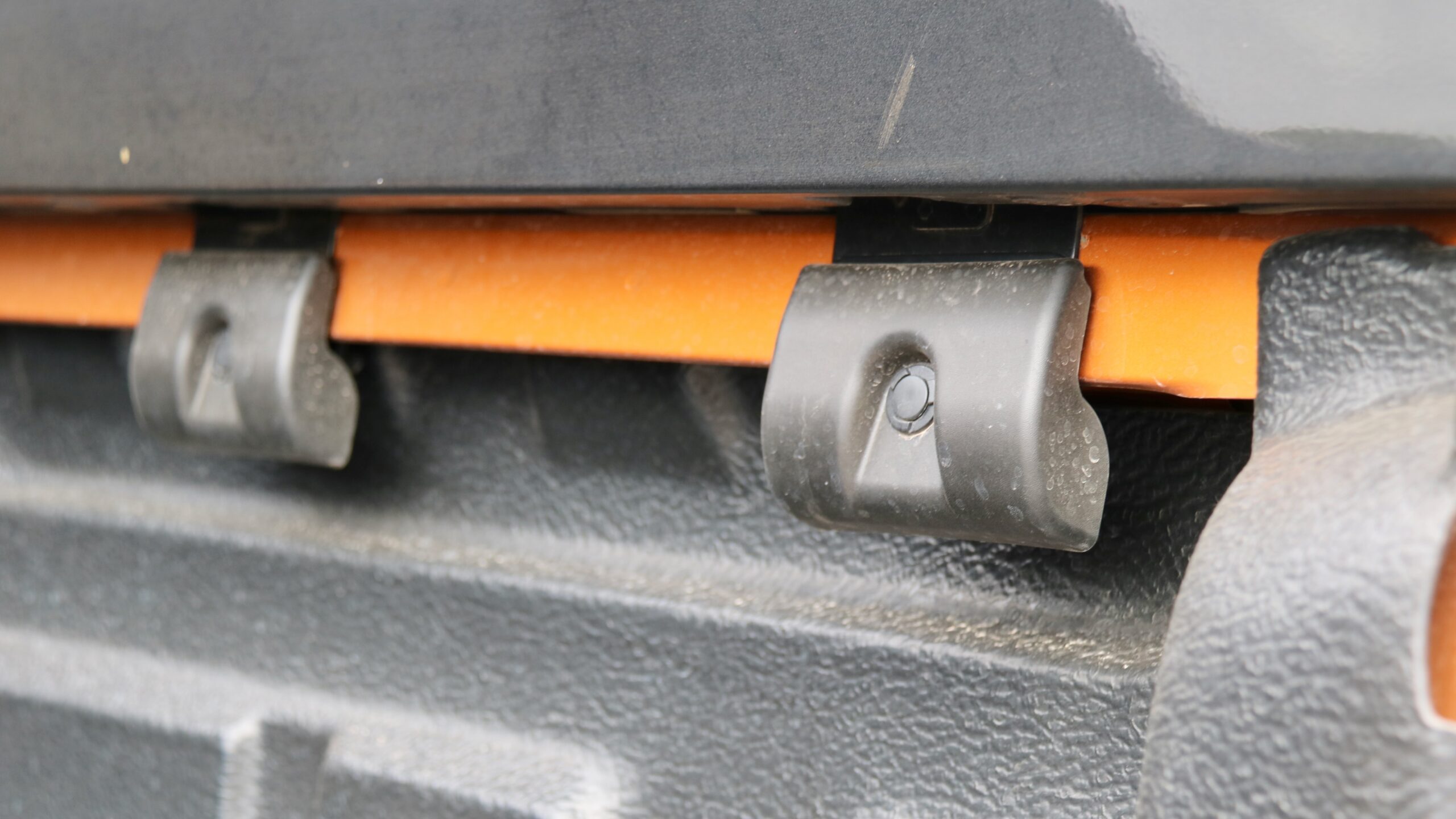
The seat itself is comfortable, and there are lots of features on offer: two USB ports for the GLX+ and above, a 12V socket, two map pockets, large door pockets that can – like the front – fit 1.5L bottles in them, a sectioned upper map pocket on the back of the passenger seat to hold a phone while it’s charging and three top-tether points and two ISOFIX points for child seats. The seat backrest folds down in one section, but unlike some utes like the BT-50 and D-Max (and Ranger and HiLux too), the seat base doesn’t fold up for extra covered storage.
The tray of the 2024 Mitsubishi Triton has been improved: it’s now larger, lower to the ground for easier loading and can now fit a Euro-sized pallet, even with a tub liner fitted. At 1,545mm wide, the Triton’s tray is 15mm wider than the BT-50 and D-Max, though its length is 16mm shorter at 1,555mm. The tray height (820mm – or 13mm lower than the BT-50) has been lowered for easier loading, while there are a few hooks and tether points to help with practicality. However, it lacks features like a power socket and some of the clever details of the Ranger, like a ruler on the tailgate. Finally, the tailgate itself is not damped and is a bit heavy to open compared to the Ranger’s assisted unit.
How much does the 2024 Mitsubishi Triton cost to run?
Like the wider new Mitsubishi range, the 2024 Mitsubishi Triton is covered by a five-year/100,000km warranty that’s extended to a total of 10 years/200,000km if serviced through a Mitsubishi dealer. 12 months of roadside assistance is extended up to four years in total with dealer servicing as well. Like a lot of rivals, the Triton’s service intervals are once-yearly/every 15,000km. The first five years/75,000km of servicing costs a reasonable $2,445 ($489 per service).
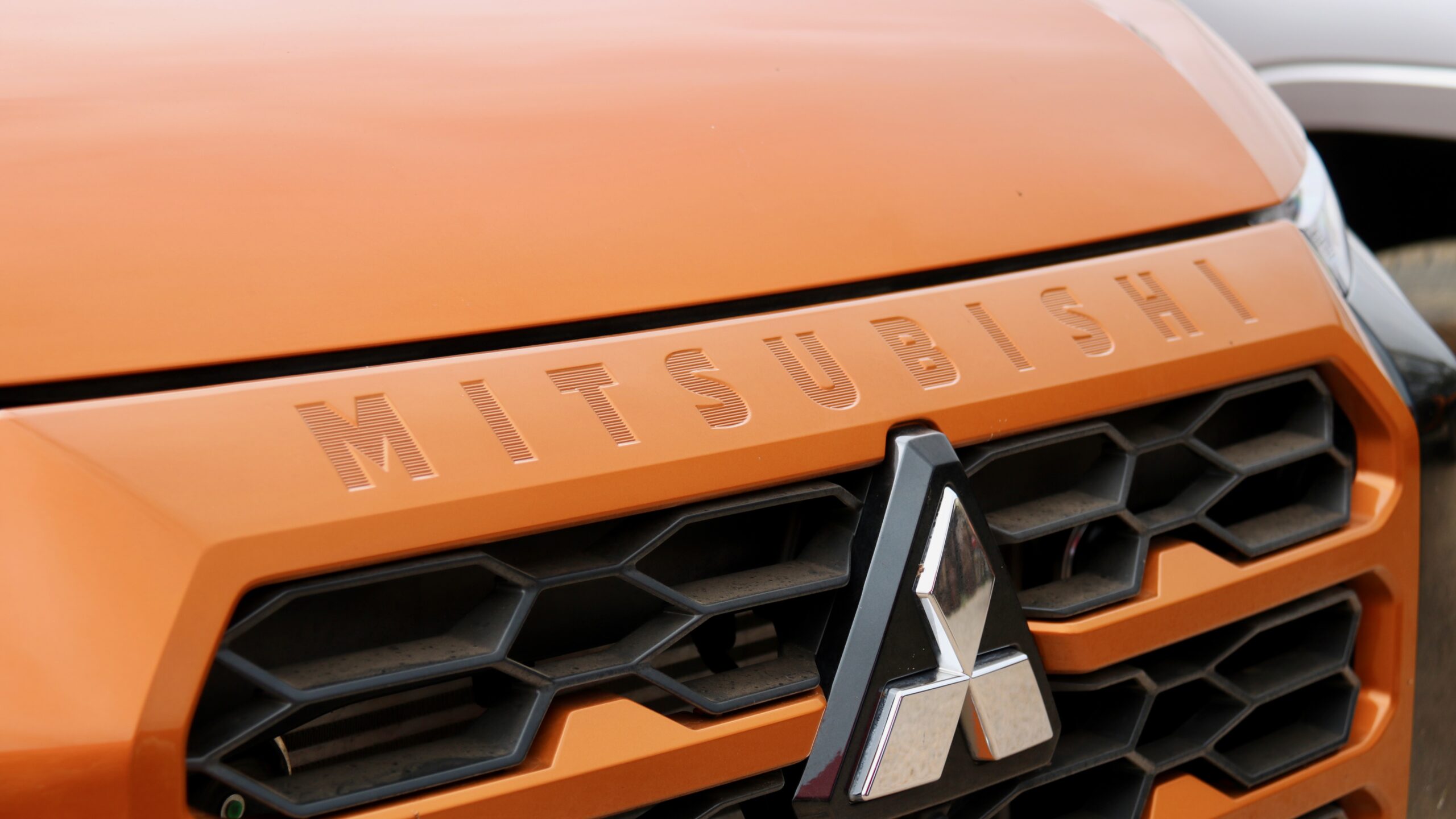
Mitsubishi’s warranty package – especially if serviced through a dealership – is one of the best in the industry. Mazda covers the BT-50 with a five-year/unlimited km warranty with five years of roadside assistance, while Isuzu covers the D-Max with a six-year/150,000km warranty. Both the BT-50 and D-Max share the Triton’s service intervals, and five years/75,000km of servicing costs $2,443 for the Mazda ($488 per service) and $2,555 for the Isuzu ($511 per service).
Should I buy a 2024 Mitsubishi Triton?
Even though we’re still keen to explore it more in our own testing regime, it’s clear from the launch of the 2024 Mitsubishi Triton that it’s a much improved product that is capable of challenging the class leaders in the ute segment. We can see that Mitsubishi has listened to the market and created a stronger, more mature Triton that’s more technologically advanced and nicer to drive than before. Its gruntier new engine is a lot more refined than the previous model, while it’s also given the Triton the 3,500kg braked towing capacity that many other utes can manage. At the launch event, Mitsubishi executives pointed out that they wanted to make a Triton for both work and play, and the new Triton does both quite well.
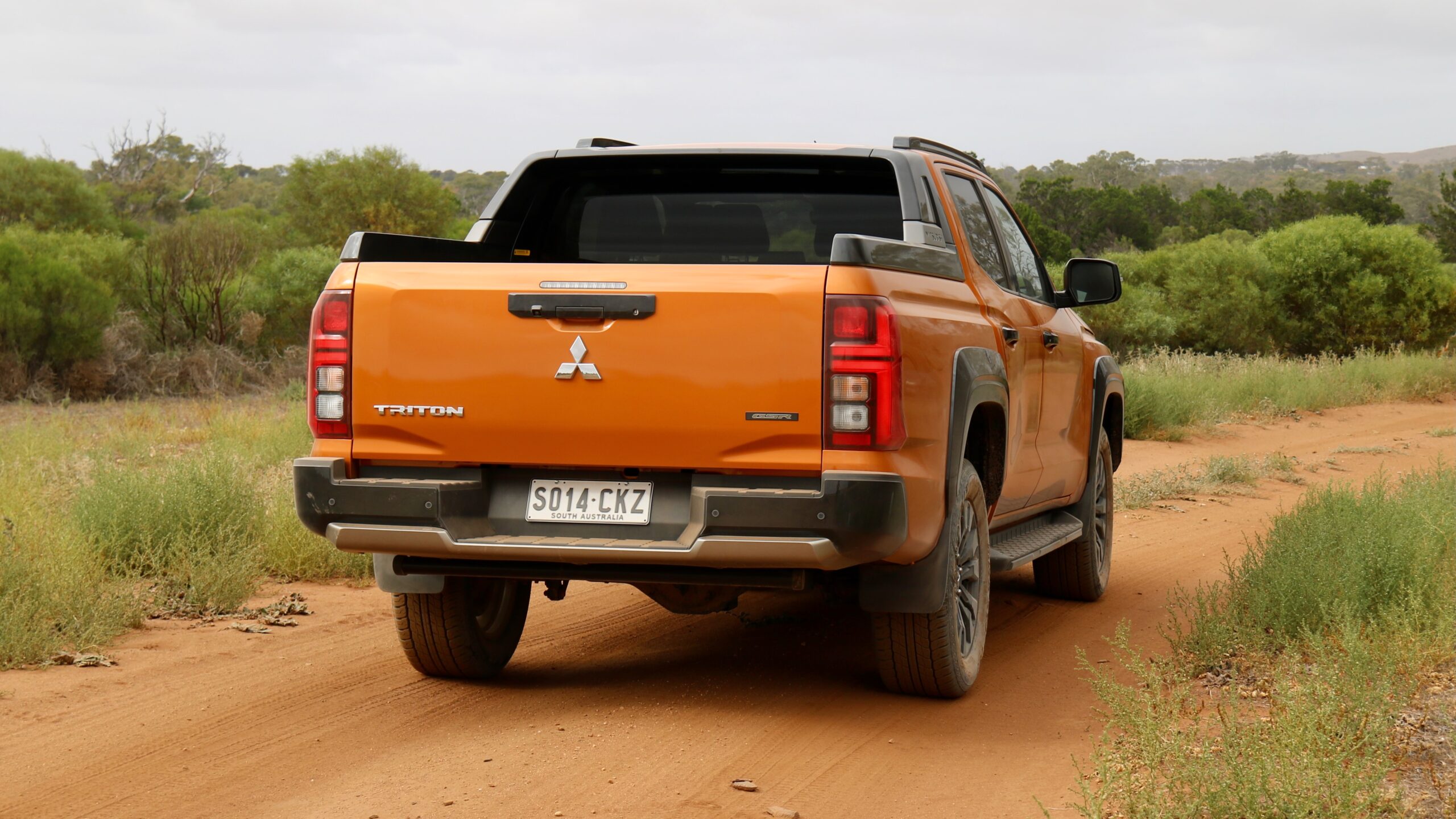
It’s not perfect, however – buyers will notice the price rises of the new model, the driver attention monitoring is sensitive and while the new engine is more muscular and refined, the lack of a hybrid or plug-in hybrid option – at launch, at least – seems like a missed opportunity, especially from the brand that was one of the PHEV pioneers with the first Outlander PHEV, so hopefully that comes along at some point. But those small issues aside, we think the new Triton is a very worthy option in the ute segment and regardless of if you’re after a ute for work or play, it should definitely be on your test drive list.
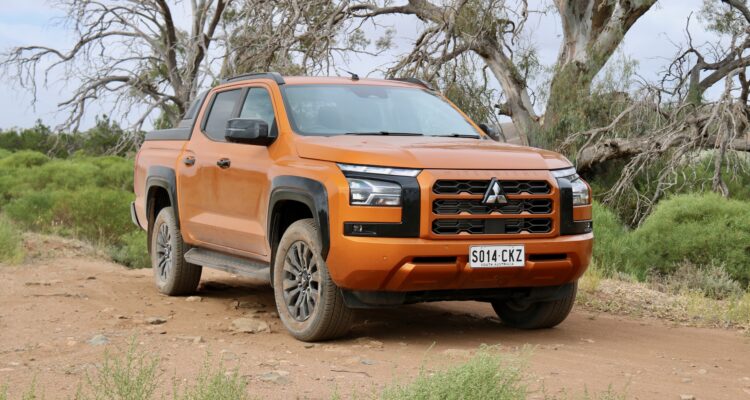
Leave a Reply